In This Article
Updated 2019-12-05
I have written detailed summaries of my travel costs for Central America, South America, and Philippines. Since I recently finished three weeks traveling in Myanmar, I thought it might be helpful to do the same for that country.
Below I will offer some helpful hints and observations, detail my itinerary and provide a detailed breakdown of my expenditures.
Observations and Travel Tips
Season
I traveled from late August to mid-September. I was arriving at the very end of the European summer holiday season and by the time I got out of Yangon every place I went was completely dead. I had read so many stories about how tourism is booming so I was quite surprised when I had almost all the temples of Bagan to myself and when there were practically no other tourist boats on Inle Lake.
August and September are rainy season months, but I had good luck with the weather. My first full day in Yangon was perfect and I explored most sites that day. The next two days rained heavily. In Bagan, I had one afternoon of showers but otherwise dry, sunny days. I did have heavy rain on the second day of my trek in Hsipaw and one day of heavy rain in Hpa-an as well, but thankfully nothing on my agenda was really spoiled by the weather.
Bagan is especially famous for its oppressive heat, but thankfully it wasn’t bad while I was there. In fact, I didn’t have a problem with the heat anywhere I went.
I don’t know how much my experience was luck and how much was typical for the time of year, but combined with the lack of tourists, I would definitely recommend September as a good time to visit.
Currency
There are a lot of older stories around the Web about how difficult the country is in terms of currency, specifically that you can only use US dollars and that they must be pristine. I am happy to say that those days are mostly done. In my three weeks, I didn’t spend a single US dollar, though I heard other travelers say that if you do use dollars they still need to be pristine (others said that is relaxing a bit, but pristine bills get you a better exchange rate). There were ATMs available in all the areas I visited and nothing required payment in dollars. It is still the case that Kyat (pronounced “chat”) are not easily exchanged outside the country, so you will want to carefully plan your withdrawals and/or be sure to exchange back to another currency before you leave the country.
Internet / Phone
The Internet in Myanmar has a terrible reputation, especially if you read older articles. Fortunately, things are improving rapidly. Still, I had good WiFi in only one hotel during my visit, with the rest varying between completely unusable to almost acceptable. Since I knew ahead of time that this would be the case, the first thing I did upon landing in Yangon was to purchase a local SIM card with 3G data. There are three main carriers: MPT (the government carrier), Ooredoo and Telenor. All have almost identical plans on offer and I read pluses and minuses for each so I think you probably are safe to just go with any of them. I chose Ooredoo for the simple reason that it was the first desk I saw in the arrivals area of the airport. I purchased the 30-day, 1.35GB plan (with 1.35GB bonus, so 2.7GB total). With a SIM card and just a bit of credit to make a couple of calls, I paid 10,000Ks. I ended up adding a bit of credit during my stay because I wanted to call a few hotels to verify availability and the ability to check in early (read on for more on that issue).
Lodging
Myanmar lodging is an interesting thing. As I understand it, it is still illegal to stay in a private residence without government permission (so no Couchsurfing or Airbnb) and only officially licensed guest houses and hotels can lodge foreigners. The prices tend to be a bit higher than neighboring countries—and much higher than you would expect given the economic situation in the country—but some decent deals can still be found. With the rapid increase in popularity of Myanmar as a destination, I was worried that it might be difficult to find reasonable options that weren’t fully booked, but I was traveling in low season and, with the exception of Hpa-an, I had no problems. Also, considering the Internet situation, I was surprised at how many places are listed on Agoda and Booking.com. Note that venere.com, a site I don’t normally use, occasionally had some special hotel deals that were better than the other sites.
Probably because it was low season, I think I was regularly paying about 20-30% less than the normal price for my rooms, though it could be that those listed prices are discounted all year as well. I am not sure.
One thing to note about hotel pricing in Myanmar is that it is more expensive to just show up and get a rate in person. Many places in the world offer the same or even a better price in person, especially with a bit of bargaining, but apparently not in Myanmar. Several times I inquired about extending my stay and was told I would have to pay a higher rate, even though there was a much lower rate available via one of the booking sites. Why someone would not just honor the online price when you have already proven to be a good customer is beyond me, but do be aware of the situation.
I was traveling solo and I stayed exclusively in private rooms. Dorm-style hostels are still not that common, though some do exist and some regular hotels do offer dorm or multi-person room options.
Virtually every hotel in Myanmar seems to include breakfast. Only once did I not have it included, and that was only the specific room I chose (all others at the hotel had it included).
Externally, at least, the service level is excellent and higher than you would expect for the price range. Staff were uniformly polite and friendly everywhere I went. Most places had staff that would even carry your bags to the room. I say externally good service because I rarely had to make any complaint or request for special services. The one time I did, in Bagan, I was actually very disappointed in the result. Still, I prefer not to draw any larger conclusions from my limited experiences.
Below I will discuss transportation options, but be aware that if you travel by overnight bus you will likely end up arriving very early in the morning. Many hotels are aware of this and offer early check-in for free or a small additional charge. Hotels don’t usually mention this on the booking sites, so if you are planning to take a night bus, I recommend calling your hotel ahead of time and asking their policy. Obviously, an early check-in will be subject to room availability. Since I was traveling in the lowest season I was able to check-in early every place I went.
NOTE: I am not sure how common it is, but at two different hotels the hot water appeared to not work but in fact did work very well. The trick was letting the water run for sometimes up to almost 5 minutes. This is, quite unfortunately, very wasteful but something to keep in mind during your stay.
Laundry
If you are making an extended trip to Myanmar, be prepared to have difficulty finding inexpensive laundromats or places to do your laundry. All hotels offer laundry services but the prices are insane, charging typically US$1-2 per item. If you are used to backpacking around lesser developed countries, you are used to having easy access to inexpensive laundry services, either via do-it-yourself machines or inexpensive per kilogram shops. I didn’t see either during my time in the country.
Here’s one useful tip. Most of the e-bicycle rental places in Bagan include free laundry with a rental. If you are planning to stay a while in the country and want to save some money on laundry, maybe plan your itinerary to include Bagan when you anticipate needing to clean your clothes.
Food
I have never been a foodie, and while I enjoy trying local dishes, food rarely takes a central role in my travels. Food in Myanmar is generally inexpensive, I’d say similar or a bit more expensive than Thailand prices. On this trip, I mostly ate at local restaurants (though, sometimes local cuisine catered to the tourist crowd, so with slightly higher prices) and so my food expenses were low.
If you do find yourself at one of the rare hotels that doesn’t include breakfast, or if you find the hotel breakfast unappetizing (a common complaint, though I had better experiences than most it seems), try Mohinga, the famous national dish of the country, for a cheap, tasty breakfast alternative.
If you are a fan of Indian food, there are some great options in Yangon. I tried well-reviewed Indian restaurants in Bagan and Inle Lake, but found them disappointing in comparison to what I ate in Yangon.
Travel / Transportation
Whenever possible I walk or rent a bicycle. One reason is simply me being cheap, but more importantly, I like the exercise and I find it a great way to see places I would miss if I took taxis (especially useful since I am always looking for good street art). I rented a bicycle in Bagan and Inle Lake, and in Mandalay both hotels I stayed at offered bicycle use free of charge. In Bagan, I also rented an electric bicycle, which is the typical thing to do, though I never saw one for rent in any other location.
To move about the country the main options are train, bus or minivan, and plane. None of them are ideal.
Long distance trains are not a great option because they are very slow and, from all accounts, incredibly uncomfortable. On the plus side, the main stations are usually conveniently located in the city center and there are usually day schedules. I read positive things about the train ride between Pyin U Lwin and Hsipaw that crosses the famous Goteik viaduct and I decided to give it a go since both places were on my itinerary. I also rode the circular train in Yangon, more for people watching than for any actual transportation need.
Planes are not super expensive, but not especially cheap either and you have to keep in mind that all the airports seem to be quite far from the cities they serve.
Long distance buses and minivans are the most popular option and what I mostly used. Like the airports, the bus stations also tend to be quite far removed from city centers (Inle Lake being a notable exception since it has no actual bus station and buses just stop near the center of town). As a result, it will almost always be more convenient to purchase your ticket from your hotel or a local travel agent. Both will charge a commission, though the latter will usually charge less. In either case, it will be less expensive to pay the commission than to get yourself to the station and buy the ticket directly, unless you just show up and buy one shortly before departure (not something I recommend since they are likely to be fully booked).
Speaking of buying bus tickets, you will often find that your hotel only has a relationship with selected companies. Feel free to visit some travel agents to see if other, better alternatives exist. One site I found useful was . It doesn’t cover all the buses operating in the country, but it is useful to get a baseline idea of who travels which routes as well as the schedules and rates for those routes. In theory, you can actually purchase tickets on the site, though I never did.
In some locations, your long distance bus ticket will include a pickup and/or drop off at your hotel, though this varies by location and company. For example, all the bus companies seem to offer pickup at your hotel in Bagan when you wish to leave but none seem to offer drop off when you arrive in Bagan.
Minivan service is available between some destinations and usually includes pick up and drop off service but less comfort. I used a minivan to travel between Inle Lake and Mandalay and from Hsipaw back to Mandalay and both were acceptable experiences, though neither used the A/C so that might be a consideration in the hotter seasons.
There are different long distance bus types and I always chose the first class (two rows of two seats each) or VIP (one row of two eats and one row of a single seat) option. I had read that they can be extremely cold and play loud and obnoxious music or movies, but I didn’t experience either situation on any that I took and I was also always provided with a blanket and a pillow (as well as a bottle of water and a small disposable toothbrush and toothpaste). Everyone I talked to seemed to recommend JJ Express but the way things worked out I never did use them. Still, I was more than satisfied with the alternative companies I used.
The worst thing about taking the buses is the schedule. I have absolutely no idea why, but almost all bus options on the main tourist routes are overnight buses and they are scheduled so that you end up arriving at insane hours, typically 2-6 AM. What are these people thinking?! Who in their right mind wants to arrive anywhere at that time and how do you hope to get a decent night sleep on an overnight bus with such a schedule?
Usually, the upside to the inconvenience of an overnight bus is saving a night’s expense for a hotel room. Thankfully, that can still be the case in Myanmar even when you arrive at 5AM since the hotels are well aware of the schedules and many offer free or inexpensive early check-in (see the Lodging section above).
Drinks and Entertainment
I am not much of a drinker or club goer. This fact alone is one of the biggest budget savings in my favor. Though you can buy beer at most restaurants, I didn’t hear many fellow travelers discuss any noteworthy nightlife so I wouldn’t plan on that being a big part of your Myanmar adventure.
Tourism
I did the typical boat tour in Inle Lake, an overnight guided trek in Hsipaw and an all-day tuk-tuk tour of Hpa-an. All were inexpensive (details below). Everywhere else I explored solo.
People
Even though I had three weeks, I was traveling relatively quickly and I unfortunately didn’t get a chance to have many meaningful interactions with locals. Still, I found the people to be among the most accommodating of any country I have visited (I would rank it next to the Philippines). I was constantly surprised at how many people stopped me on the street to say hi. Not to sell me something, simply to say hello and to be friendly. Which is not to say there are no touts. As soon as you hear the magic words “What’s your name?” and/or “Where are you from?” be assured you are talking to a tout.
Some folks wanted a picture with me and/or other travelers. When I was wandering lost around the enormous Yangon bus terminal, probably a dozen or so individuals kindly helped me find the bus I was trying to take. I was befriended by a monk and his student while I was visiting one of the lesser known temples in Yangon (they invited me back to their home for tea, a snack and conversation and even gave me a parting gift). The staff of the hotel in Hsipaw sent someone to meet me at the train station and take me to the hotel, even though I hadn’t told them that was the mode of transportation I was taking. I could cite other examples, but the point is that the lovely people of Myanmar helped make a good visit a great one.
Other Useful Tips
Erica at Girl Unspotted offers the following temple hopping recommendation:
“I recommend bringing wet wipes with you at all times to clean your feet as you go. Some major attractions like Schwedagon Pagoda offers wet wipes outside for a small price or a tip, but many others don’t. Socks aren’t allowed either so don’t try to be cheeky. One temple I went to in Inle Lake had hella pigeons so I’m pretty sure I was basically walking in pigeon poop. Those wipes are lifesaver so keep them handy. Oh, and also keep in mind how hot the ground is during day time so you’ll be tiptoeing silly at one point.”
Itinerary
Unless you are specifically trying to get off the beaten path or if you have a long time to enjoy the country, you are probably going to be visiting the main tourist hotspots: Yangon, Bagan, Inle Lake and Mandalay. If you have a bit more time you may also end up visiting Bago, Kyaiktiyo, Mawlamyine, Hpa-an, Kalaw, Pindaya, Pyin U Lwin, Hsipaw, Mrauk U or one of the beach areas.
Though I gave myself three weeks to explore the country, I wasn’t able to visit all those spots. Notably, I had to skip Bago, Kalaw, Pindaya, Kyaiktiyo, Mawlamyine, Mrauk U and the beaches (which I hear are not good options in the rainy season). I also spent less time than I would have liked in Mandalay, Hsipaw, Hpa-an and Pyn U Lwin and, though I spent enough time in Bagan to see what I wanted to, I would have gladly spent more. There is a lot to see and do in Myanmar so either give yourself enough time or be selective about what you want to see.
One interesting challenge is deciding on the order of destinations. You will probably fly into and out of the same city, usually Yangon or Mandalay, so you will end up doing a big loop with or without some offshoots. If you have the opportunity, it might be more convenient to fly into one of those cities and out of the other. Ultimately, the order of my itinerary wasn’t so important to me, but what I tried to do was understand which routes had the most convenient transportation options (trying to avoid arriving at places at 3:30AM). In the end, I am not sure I made the best choices, but it all worked out fine. So, here was my itinerary, with a note about where I stayed and what I saw. I won’t go into too many details on things to see, do or eat, as there are lots of good resources for that already, many of which I list at the end.
| Day | Itinerary |
| 1 (August 25, 2016) | Arrive Yangon |
| 4 | Night bus to Bagan |
| 8 | Night bus to Inle Lake |
| 11 | Minivan to Mandalay |
| 14 | Shared taxi to Pyin U Lwin |
| 15 | Train to Hsipaw |
| 18 | Minivan to Mandalay |
| 19 | Night bus to Hpa-an |
| 21 | Night bus to Yangon |
| 22 (September 15, 2016) | Leave Myanmar |
Yangon
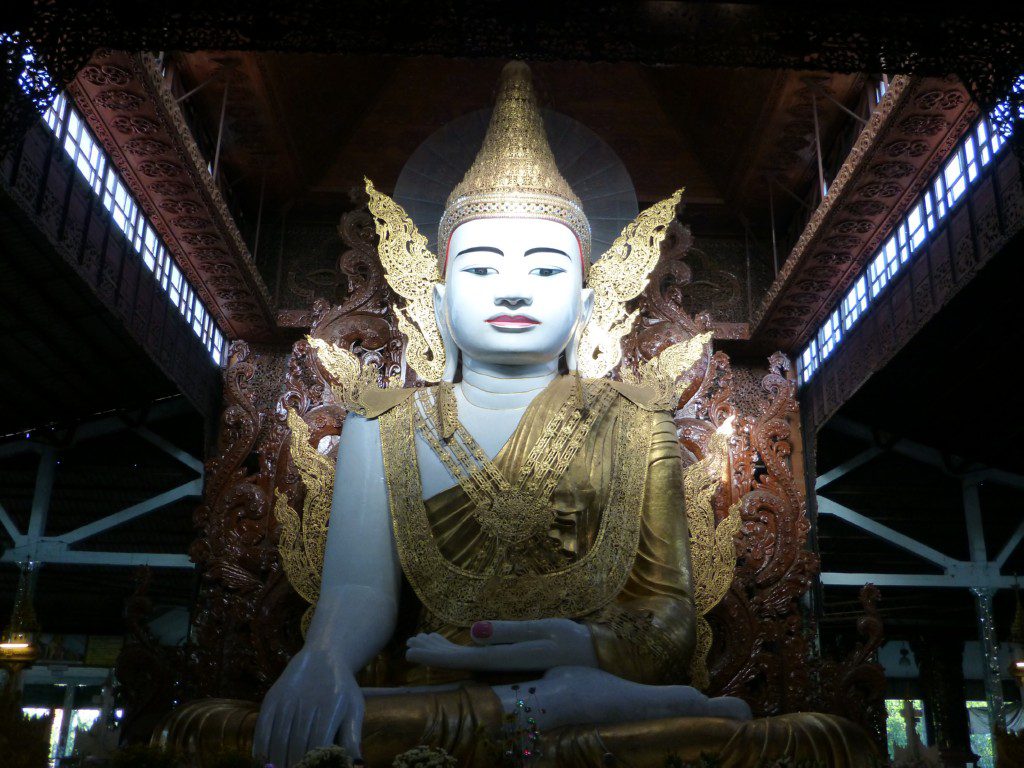
I stayed at Space Boutique Hostel, very close to the Sule Pagoda. I stayed in a private room that was tiny with no window and had a shared bathroom, but it was clean and the A/C worked very well. The WiFi was pretty awful and had to be reset countless times during the day but the employees were friendly and I met many nice fellow travelers in the common area. The breakfast was also pretty decent and they had a nice Nescafe coffee/hot chocolate machine you could use all day. The location was good, though a bit hard to find since it has no noticeable sign, is on the third floor of a nondescript building, and the very narrow entrance was always obscured by street vendors (fortunately, my taxi driver from the airport knew the place and pointed it out to me). The Indian restaurant (Nilar Biryani) a couple of doors down was excellent, though there is no shortage of other food options nearby.
If you’re looking to save some cash to or from the main Aung Mingalar bus station, you can catch the shared taxi (minivan) for a fraction of the cost of a regular taxi ride (1,000Ks). They depart on the main road that leads to and from Sule Pagoda, which is a short walk from where I stayed.
Most people seem to take a taxi to and from Shwedagon but I like walking and didn’t find it too terribly far. Speaking of walking, apparently there is a free walking tour, which I usually find to be quite good around the world, but I didn’t get the chance to use this one. If you are interested, go to the car park opposite city hall and look for a guy with a green shirt or umbrella (Mon, Thu, Sat, Sun, 4-6pm). Like similar tours around the world, the guides work for tips.
As for Shwedagon, I went late afternoon and stayed for sunset, which I recommend as daytime, dusk and night lighting offer vastly different aesthetic experiences.
I enjoyed the lesser known Chaukhtatgyi Temple in Yangon, which is home to one of the largest reclining Buddhas in Asia and is where I met the very friendly monk and his student. Very close to it is another temple with a huge Buddha statue that was also quite nice.
Drifter Planet recommended a visit to Kyay Thone pagoda, and warned that it is difficult to find. Sadly, I must admit that I was unable to find it, though I was in a bit of a rush so I didn’t really give it a thorough search.
I had hoped to take my Kindle and spend some relaxing time at Kandawgyi Lake, which is said to be quite lovely, but alas the weather did not cooperate.
Finally, I did take the popular circular line train for the people watching. For the first 20 minutes or so, I thought I had made some mistake as there was nothing terribly interesting in terms of people or scenery, but then we arrived at one stop and the train filled with people and their produce heading to a local market. Some vendors sell food that is cheap and looked quite good, but unfortunately I had already eaten so I recommend you go hungry and eat on the train for an even more authentic experience.
Bagan
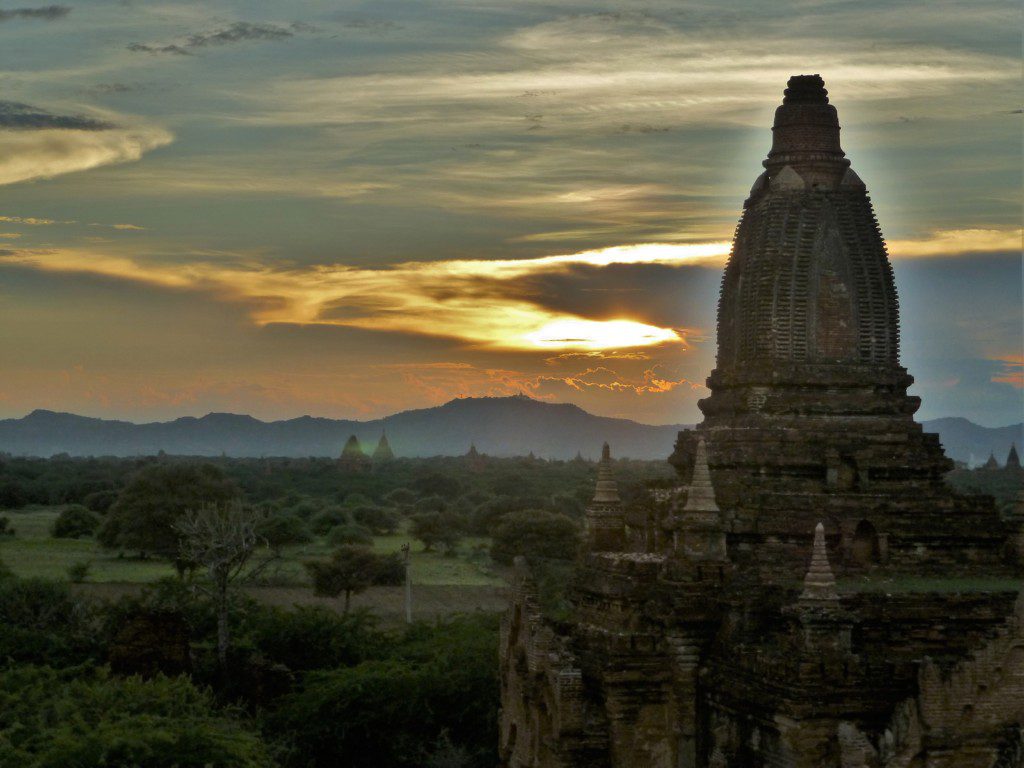
Bagan has three distinct areas to stay in: new Bagan, old Bagan and Nyaung U. The common perception is that the latter is most popular with backpackers, new Bagan is sort of mid-range and old Bagan is more upscale, though there seemed to me to be a mix of property types in all three places. As far as I can tell, none of the three is any better or worse than the other in terms of convenience, so I would just choose a hotel that fits your budget and amenities.
I stayed in new Bagan (at the edge) at Hotel Yadanarbon Bagan. I think your experience will depend on the type of room you book. Perhaps every type of room except mine (basic single room with shared bath) would have a great experience. I, on the other hand, did not. I admit that I mostly chose this place because it has a nice pool and a reasonable price. The idea was to explore in the mornings and late afternoons and enjoy the pool during the day and in that regard it was excellent. Unfortunately, my room had an awful smell and when I asked to be moved to another room they would not do so without charging me more. My room type was also tiny (which I actually didn’t mind) and was the only one that did not include breakfast. It had a shared bath, which I also don’t mind, but the showers had no hot water. Finally, the exchange rate the hotel used and the prices they charged for electric bicycle rentals and transportation or tours were also awful. On the plus side, the WiFi here was the best of all the hotels I used during my stay and the pool was indeed nice.
Be aware that certain places in Myanmar have a government fee for tourists and the Bagan Archaeological Zone is one of those. If you enter via your own transportation, you might avoid paying it, though in theory you would be checked at the larger temples (I wasn’t, but perhaps just because it was low season). If you come by bus, the taxi from the bus station will stop en route to your hotel for you to purchase the visitor pass. The price when I was there was 25,000Ks and is good for 5 days.
For my first two days, I rented an e-bike and that was convenient and fun. You don’t need any expertise to drive one and there is no real paperwork or license check involved. Just find one of the countless vendors, pay the rate and off you go, though a couple of tips might prove useful. First, some of the smaller paths between temples have loose dirt and it can be easy to lose your balance and fall so be careful for that. Second, a good bike with a good battery should last all day, but that varies a lot on the bike you get (you typically return the bike each night and they recharge the battery for you for the next day). Most rental places will give you a number you can call if you have any problems, including a dead battery, but that might be an issue if you don’t have a local SIM card. People are friendly and helpful so I imagine you would be fine as long as you are not too far off the beaten path. Rental rates vary but it shouldn’t be too hard to get one for 4,000Ks. I paid 7,000Ks for two days. I think my hotel wanted something like 12,000Ks per day so definitely shop around.
On my last day I traded the e-bike for a standard bicycle. I paid 1,500Ks but most places were charging 3,000Ks so if you get a good deal on an e-bike that is probably worth the little extra. I just wanted some exercise so I switched. If you get a decent bicycle it should be sufficient to get around all the temples, but some of the regular bicycles are in pretty poor shape and you will probably suffer if you get one of those. If you go during the hot season, you may prefer the e-bike option.
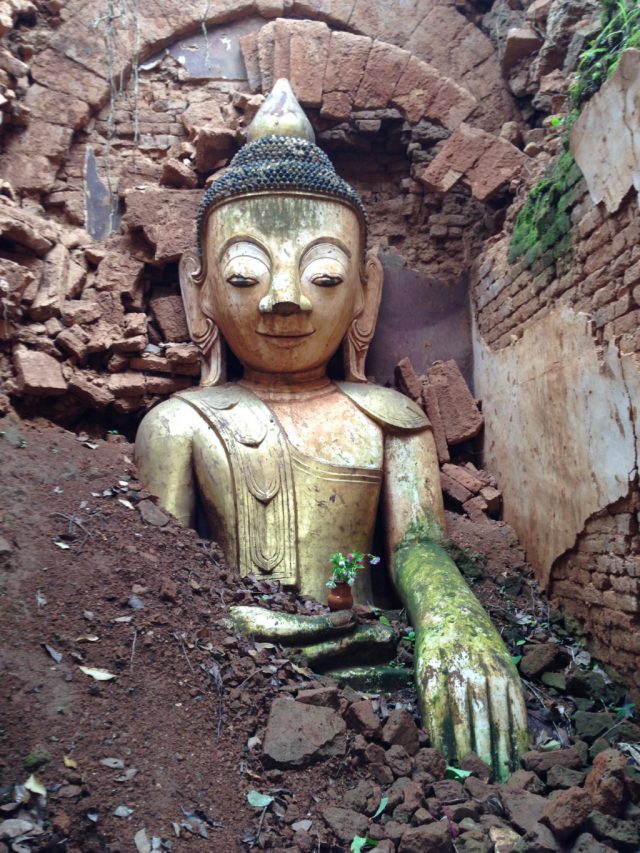 As for things to do, mostly you just explore the many, many temples in the area. The day before I arrived in the country, there was a strong earthquake that did a fair amount of damage to some of the temples. As a result, some are now closed completely while others that you could climb in the past are no longer open for climbing. Still, there are some you can climb and most were either not damaged or only lightly damaged, so don’t be discouraged from visiting.
As for things to do, mostly you just explore the many, many temples in the area. The day before I arrived in the country, there was a strong earthquake that did a fair amount of damage to some of the temples. As a result, some are now closed completely while others that you could climb in the past are no longer open for climbing. Still, there are some you can climb and most were either not damaged or only lightly damaged, so don’t be discouraged from visiting.
Your hotel may have a basic map available and apparently a better map can be purchased, but I relied instead on my offline maps app for exploring. Most of the smaller temples exist on my app but have no name assigned, even though many of them were my favorites. I found a couple of less popular temples that you could climb, marked those on my map, and returned for either sunset or sunrise. Speaking of those golden hours, they really are the best time to be out and about, so put aside any natural aversion to rising early for at least the duration of your stay in Bagan.
Since there are so many temples to explore, one thing I recommend is to keep a journal of which ones you want to visit and which ones you actually do visit (and in what order) so later you can remember and maybe cross-reference your photos, locations, etc. I wish I had done that for myself but I didn’t, so learn from my mistake.
Another temple touring tip is to wear sandals, flip flops or some kind of footwear that can be easily taken off as you cannot enter any temple wearing your shoes or socks. Likewise, cover your shoulders and legs by either dressing appropriately or bringing a sari, sarong or similar garment.
You will want to stay well hydrated while you visit the many temples, so bring a couple of water bottles. Thankfully, many temples offer free drinking water so you can refill the bottles.
Dustin Main, as much of a travel blogging expert on Myanmar as you’re likely to find, offers this useful information:
“The temples are typically taken care of by a keyholder, or a family that lives nearby. They get paid very little for taking care of these ancient temples, so it’s customary to drop them a few hundred kyat for opening a temple for you if you’re off the beaten path. If the place is locked and they need to unlock it, I’ll give 300k-500k. If they’re helping me light the path up a set of treacherous stairs, maybe 200k.”
Besides temple touring, the other main attraction in the area is Mount Popa. I read mixed reviews about it and since I wasn’t tired of temples before my time in Bagan ended, I chose to skip it.
NOTE: The taxi mafia is strong at Bagan bus station. And it is quite ridiculous because the distance isn’t far and there is no traffic to deal with. What is strange is that when you are ready to leave Bagan the buses will come pick you up at your hotel but not when you arrive. The starting quote I received upon arrival from drivers was 15,000Ks! At the same time a loudspeaker was announcing (in English) prices to the three main towns (5,000Ks to Nyaung U, 7,000Ks to New Bagan and 8,000Ks to Old Bagan). I had read online that people were able to get 3,000Ks (I presume to Nyaung U). I couldn’t find anybody going to New Bagan to share a taxi with but after some bargaining I was offered a price of 4,000 and I accepted.
Inle Lake
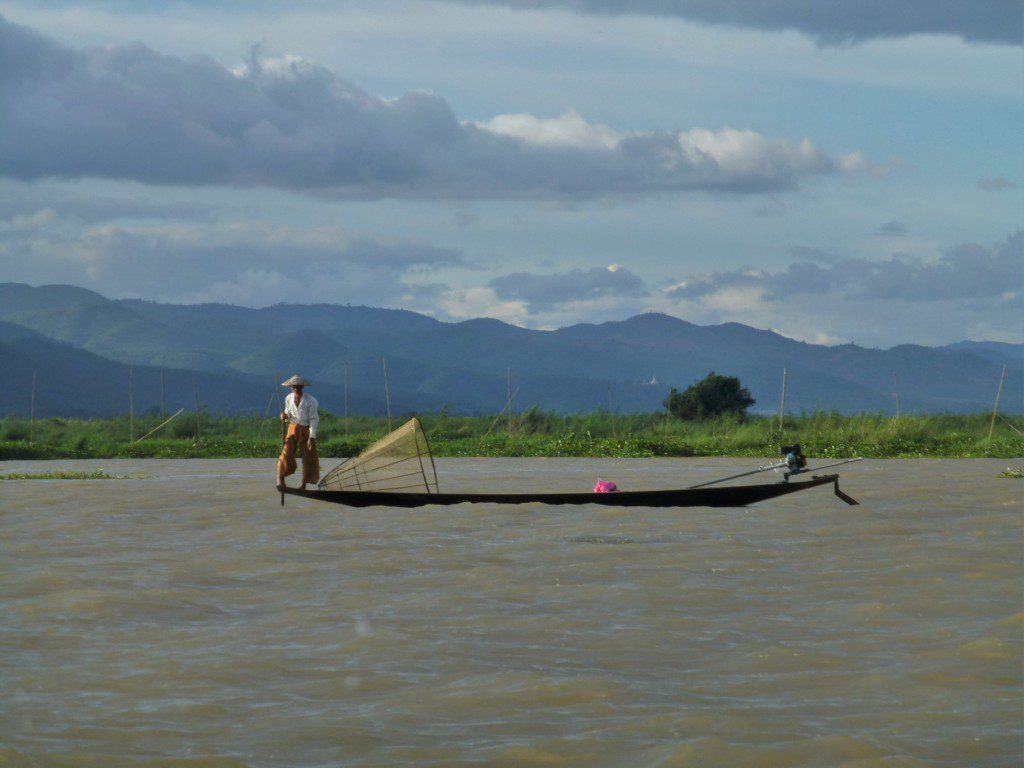
I stayed in Nyaungshwe (the main town offering access and accommodation for the lake) at Sandalwood Hotel. As I was taking a night bus, I called ahead to ask about an early check-in and was told it would be no problem. I was also quoted the same discounted price I found online (the only place I found that did this for me) and was thus able to reserve a room via phone rather than booking online. When I arrived, I found a very decent hotel a block or so from the main jetty with friendly owners. I checked in early with no problem and immediately went to sleep. When I woke up, the owner (or manager?) asked how I liked the room. I thought it more than adequate but still he suggested I move to an even nicer room (I had been given that room by the night watchman) for no extra charge, which was thoughtful. Later I realized there was only one other guest, which made the upgrade understandable but none the less appreciated. I was also able to rent a bike from the hotel for the going rate and the breakfast was quite good.
The two main things to do in the area, as I gathered, were to bicycle around (usually taking a boat across to or from Maing Thauk to make the round trip more manageable) and the standard boat tour on the lake. So, two full days is sufficient, though it was a nice enough area to spend more time in if you are able. Interestingly, I had read some negative things about Inle Lake and I think those issues are perhaps on display in the high season, so again my timing proved helpful.
I read several nice things about Pindaya as a nice side trip when visiting Inle Lake but I didn’t have time to visit. It is also popular to do a multi-day hike between Kalaw and Inle (usually in that direction) but I was short of time and wanted to do a trek in Hsipaw instead so I skipped that.
Regarding the boat tour, you basically find and negotiate a price for a boat, which can typically accommodate up to five people. Usually you pay a bit extra if you want to visit the Shwe Indein Pagoda, which I recommend. The price will depend on your bargaining skills, but 15-20,000Ks for the standard tour (for the boat, not per person) is pretty typical. I went with the other gentleman staying at Sandalwood and we got a price of 18,000Ks including Indein (15,000Ks without). If you are on your own, just head down to the jetty in the morning and see if you can join up with a group that is less than five persons and you should have no problem I think.
As for the tour itself, some complain it is a tourist trap and I suppose that may be a bit true, but I found it a perfectly pleasant way to spend a day and if you charter the boat yourself or in a group, you are free to work with the driver to decide where you do and don’t want to go. And, yes it is true that the various shops you visit are hoping you will buy some gifts, but there was no hard sell in any place I visited and I found it interesting to see how the crafts were made.
I imagine most of the boats on offer will provide good service for a reasonable price, but if you would like a recommendation, the gentleman I went with was quite good, even bringing us to his home for tea and to see his “neighborhood” toward the end of the tour. His name was Ko Myo Myint and you can phone him at 9428358626. Alana at Paper Planes recommends Nyunt Pe (9428316291).
Like Bagan, there is a tourist card fee for the Inle Lake area that you will pay upon entering the town. My bus stopped at the payment center and someone boarded the bus to sell the tickets. I paid 12,500Ks for the ticket.
Mandalay
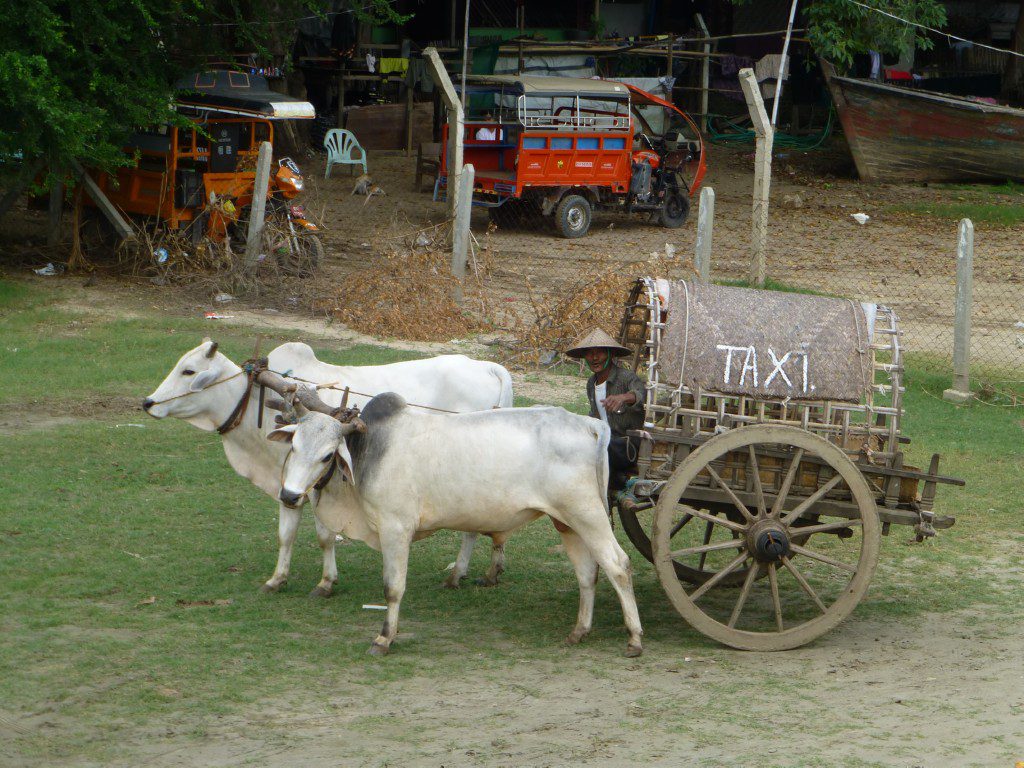
Mandalay is another place that seems to get mixed reviews, but I suspect that is because people don’t give it a fair chance. In fact, there are a fair number of things to see and do there and I found it quite nice. Because it was inconvenient to travel between Hsipaw and Inle Lake, I decided to go from Inle to Mandalay and then do a side trip to and from Hsipaw. Thus, I stayed two different times in Mandalay and at two different hotels, both close to each other.
My first hotel was Hotel A1 and the second was Hotel 8. Both were nice with large rooms, a decent breakfast and free use of a bicycle. The WiFi at A1 seemed to only be decent during daytime hours as I guess it was in heavy shared use otherwise. I only spent one night at Hotel 8 but the WiFi there seemed much better. Both had decent breakfast included.
As I mentioned, there is actually quite a lot to see in and around the city, the most popular destinations being the U Bein teak bridge, the Mandalay Palace, Mandalay Hill, Innwa, Sagaing and Mingung.
There is a “Mandalay Zone Fee” of 10,000Ks that covers some of the central attractions and lasts for about a week, though I believe Innwa and Mandalay Palace are the only places that check the ticket and, unlike Bagan and Inle, getting one is not mandatory so if you plan to skip both of those, don’t bother. Mingun and Sagaing require a separate ticket (I paid 5,000Ks for Mingun and I think that would have covered Sagaing as well but I didn’t end up going). Mandalay Hill has an entrance if you make it all the way to the top (I believe 3,000Ks).
Because the various sights are spread out, most people opt to hire a private taxi and guide (either a moto if solo or a regular taxi if sharing). If you have more time to enjoy the area and you enjoy a bit of exercise you can reach most places via bicycle as well. Mingun will require a boat trip and there is only one round trip each day (leaving in the morning and returning in the early afternoon), so that will demand the better part of a day.
Pyin U Lwin
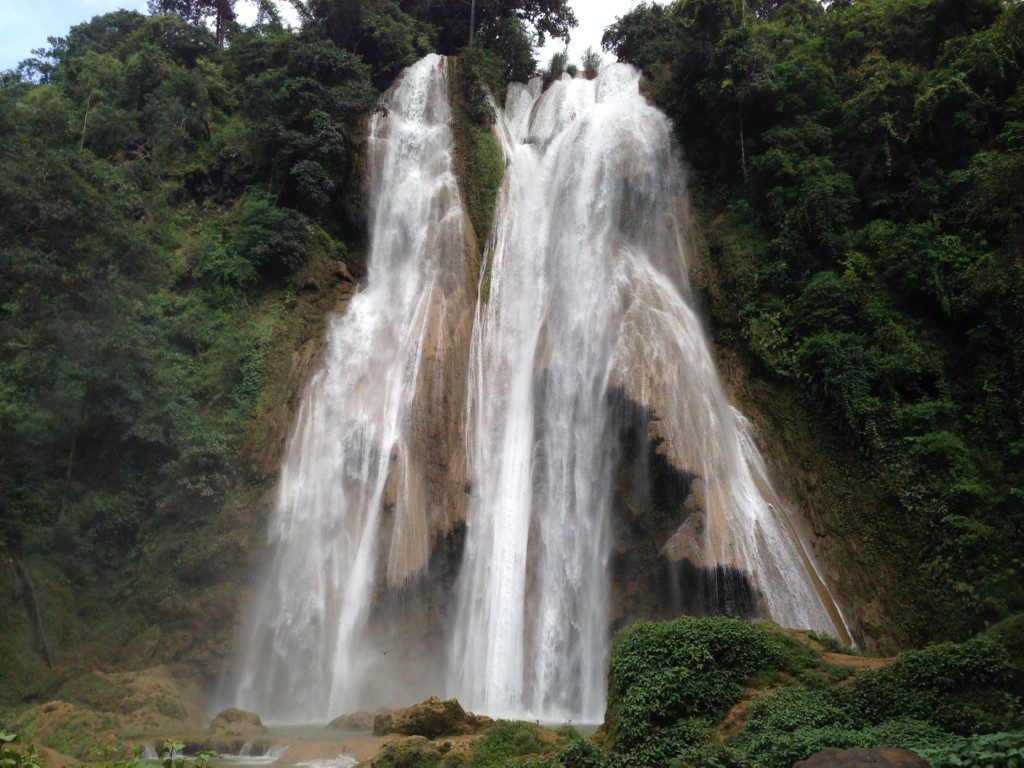
I wanted to take the scenic train to Hsipaw and that can be done leaving from Mandalay, but departure time is around 4:30 AM if I recall correctly, and that did not sound appealing to me. You can also take a shared taxi to Pyin U Lwin a bit later and still have time to catch the train from there to Hsipaw, passing the Gokteik viaduct en route. I read Pyin U Lwin was nice so I decided to spend a night there. I took a shared taxi (arranged easily by my hotel) and it brought my directly to the hotel, Orchid Hotel Nan Myaing, which is actually located a bit outside the main town though you can use a bicycle free of charge to get there.
The hotel is quite nice, but I would say it has morphed into more of a traditional hostel, though my private room was very large and comfortable. The reviews make it sound like a beautifully landscaped oasis perfect for relaxing a few days. I would say it is pleasant and I would have gladly spent a couple of days there, but it isn’t quite so nice as some paint it to be. The restaurant onsite has a basic selection of local and foreign food with good prices. The hotel charges no commission on transportation so that is good if you need a shared taxi to Mandalay. Another very nice thing is that they provide free transportation to the train station in the morning to catch the train to Hsipaw. Overall, for the price and quality, I think Orchid is a good option.
Since I arrived early afternoon and was leaving the next morning, I really only had time to visit the Anisaken waterfalls and hop into town for dinner but I heard the botanical gardens are very nice as well.
Hsipaw
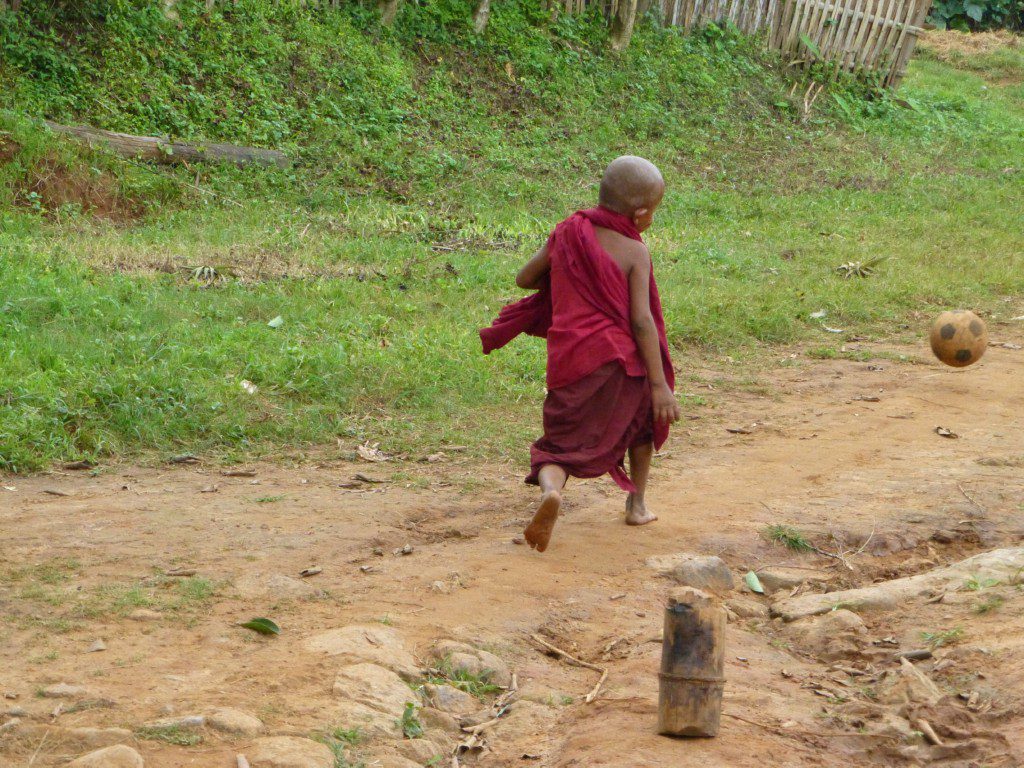
The trek from Kalaw to Inle Lake is quite popular, but a friend had told me that he enjoyed his trekking in Hsipaw more and since I didn’t have time to do both I opted for Hsipaw. Taking the scenic train to get there was a bonus.
Once I arrived I stayed at Hotel Lily the Home. Though Mr. Charles is the most famous guest house and arranges the most trekking tours, I heard it was overpriced and not especially nice. Besides, Lily was recommended and their trekking guides apparently use a slightly different route than Mr. Charles’ guides. In the end, it was a good choice as the hotel was comfortable and friendly. They even sent someone to pick me up at the train station and bring me to the hotel, even though I didn’t mention to them that was the way I was traveling. OK, it’s not a difficult guess and the station isn’t terribly far away, but the gesture was appreciated.
The main activity in and around Hsipaw is trekking. There are several shorter day hikes you can do and then there are one or multi-night treks where you do a homestay in one of the surrounding villages. I was traveling alone and had hoped I might meet some other hotel guests to do a trek with but none seemed to be planning one (the only downside to the low season). Fortunately, I met two sisters on the train ride who were staying at a different hotel (Northern Land, which they said was nice) and they were interested so we all arranged a two day, one night trek at Lily, which turned out to be inexpensive and good (except for the torrential rain during our first night which forced us to change our route back). We paid 15,000Ks each per day and that included the guide, the homestay and meals.
Hpa-an

My final destination was Hpa-an, which I had read some great things about. This is a smaller town and has a limited supply of guest houses, all of which were already booked on the main online sites. Fortunately, the sisters I trekked with had already been there and recommended Galaxy Motel (you can now book online but at that time you couldn’t) so I gave them a call and was able to reserve a room. There is nothing very special about the hotel and though it claims to have been recently renovated, it was hard to see that being the case. Still, I quite liked staying there. Everyone was friendly and helpful and they let me check in super early and gave me an extra free breakfast. The WiFi was acceptable and they helped me arrange a tuk tuk tour the same morning I checked in. When it was time to catch my bus back to Yangon it was raining and they gave me a ride to the bus office so I wouldn’t get wet (it wasn’t too far to walk, but the gesture was very nice).
There isn’t much to do in the city itself, though I definitely recommend catching the sunset at Shweyinhmyaw Pagoda. You can hire a small boat to do a sunset cruise as well but I didn’t do that.
The main reason to visit Hpa-an is to see the sites and scenery outside of town. I had wanted to climb Mt Zwegabin but I only had one day of good weather and on that day, I did the popular tuk tuk tour of the main sites. For that tour, I had hoped I might partner up with some other guests at Galaxy but there wasn’t anyone else going that morning. The owner helpfully suggested that I might join one of the tours run by the more popular Soe Brothers guest house but also mentioned that they didn’t visit Saddar cave, which I wanted to see. Whether this is true or not I cannot say; if you are staying at Soe Brothers, ask them to be sure. I think the standard price is 5,000Ks per person but as I was alone I was offered a price of 10,000Ks. I also had to pay 2,000Ks for a boat at Saddar cave (you can just walk back the way you came, but the boat ride is nice) and 3,000Ks for the final cave I visited (the cave was nothing special but the views from the top of the adjoining hill/temple were amazing).
A word of warning regarding the tuk tuk tour: the roads are in very rough shape and this was the bumpiest ride I have experienced in a very long time, perhaps ever. Bring an extra cushion to sit on if you have one, or prepare for a sore rear end! Of course, an alternative option is to rent your own motorbike and do the tour yourself since all the tuk tuk is really providing is transportation, not commentary or guiding services. It might even be slightly less uncomfortable. You can rent an automatic motorbike for 8,000Ks at Galaxy or elsewhere and I read you can get a semi-automatic for 6,000Ks at a shop a couple doors down from Soe Brothers called Good Luck Motorbike Rental.
I had read that the nearby bat cave is a must-see. It is a small cave that cannot be entered but you can go there for sunset when hundreds of thousands of bats fly out. Perhaps it is a seasonal thing but when I went the bats didn’t leave until it was fairly dark. The family that lives on site used a flashlight to illuminate the exiting bats but it was difficult to see and frankly, I wouldn’t recommend it. Still, if you have the time and you rented a motorbike, it might be worth giving a shot and see if you have a better experience than I did. I went via the same tuk tuk driver I did the tour with the prior day and I think I paid 3,000Ks. I also left a donation for the family living there (and it looks like they could use it).
My Budget Breakdown
For the 22 days I traveled (including transit to/from Thailand) I spent US$796 for a daily average of US$36. That includes all expenses including flights (US$96 round trip) and the visa on arrival (US$50). Below are charts breaking down those expenses by category.

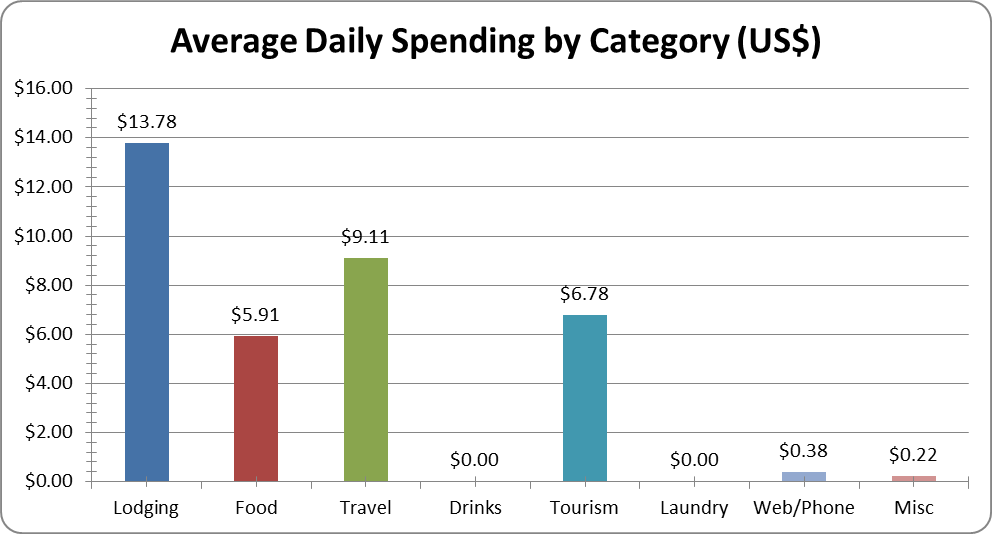
How I Track My Expenses: Get the Spreadsheet Yourself
There are now some useful smartphone apps to track expenses, but when I started traveling in early 2009 I was still years from owning my first smartphone. Instead, I created a spreadsheet to track my travel expenses, which I still use. I suppose it is a bit old school, but it works for me and if you are interested in using it as well, I gladly make it freely available. Just click through for the Google Sheets version or contact me to request an Excel or Open Office version.
The spreadsheet will automatically convert to US dollars and Euros and it can handle a variable number of days, up to 366 (accounting for a leap year), though there is a smaller one-month worksheet as well for shorter trips. It will also automatically graph your expenses by category. If you do use it and find any errors please let me know.
Useful Links
I mentioned earlier that there are a lot of good resources for planning a trip to Myanmar. Below are the ones I had collected over time and that I used for my own trip, organized by topic and mostly in alphabetical order. Some are better than others, but if you want to shortcut your time spent on Google, these might be a good start.
Country Info, Travel Guides and Planning Info
- 6 Amazing Things You Can Only Do in Myanmar
- 16 Things You Should Know Before Going to Myanmar
- 17 Things To Know Before You Go To Myanmar
- 35 Random Observations About Burma (Myanmar)
- A Beginner’s Guide to Travel in Myanmar
- A Little History… Myths and Spirits in Modern Myanmar
- A Short Guide To Independent Travel In Myanmar
- An Offbeat Rendezvous – A 2 week itinerary for Myanmar
- Backpacking in Burma
- Banana Pancake. Or: All you need to know when travelling to Myanmar (Burma)
- Burma Travel: 5 Great Myanmar Travel Experiences
- Ditching the guidebook, the Burma challenge
- Don’t Fear A Visit To Myanmar
- Dos and Don’ts for Tourists
- DVB’s Top 10 tips for visitors to Burma
- Five ways to experience local Myanmar
- Exploring Myanmar (Burma)
- How Much Does it Cost to Travel in Myanmar / Burma?
- How Much Money Do I Need For Myanmar
- How to Travel Responsibly in Burma
- Indie Travel in Myanmar for $45 Per Day
- Myanmar essentials: a guide to planning your Burma trip
- Myanmar Travel Guide 2016
- Myanmar Travel Tips – 15 Things to Know Before Visiting Burma
- Myanmar Travel, Tips, And Truths
- Myanmar Travel Guide
- Myanmar Travel Guide
- Myanmar Travel Guide 2016
- Myanmar: What Not to Worry About When Planning Your Trip
- Myanmar: Why on Earth Would We Want to go There?
- Planning a Trip to Burma/Myanmar
- Travel to Myanmar – Episode 354
- Why I Loved Myanmar: First Impressions
- You Know You’re In Myanmar When…
- Top Things To Do in Myanmar: Tourist Attractions
- The Nearly Perfect 10 Day Trip to Myanmar – Leg 1: Yangon
- The Nearly Perfect 10 Day Trip to Myanmar – Leg 2: Bagan
Visa Info
- Myanmar E visa (Official Government Website)
- Getting a Burmese Visa in Bangkok (in Pictures)
- How to Overstay Your Myanmar Visa
- Step By Step On How To Easily Get Your Myanmar Visa In Bangkok
Transportation
- The Travelers Guide To Transportation in Myanmar
- FlyMya offers travellers the opportunity to book flights to over 25 destinations within the country via credit card or PayPal. On the website, travelers can compare flight schedules and prices of the country’s 10 domestic airlines and make bookings with just a few clicks. Air E-tickets are delivered to customer via email.
- How to cross from Myanmar to Laos overland
- (can check prices and schedules and buy tickets as well)
- My 5 Worst Bus Rides in Burma (Myanmar)
Food
- A Little Sweetness… Hospitality and a Lesson in Burmese Candy
- Guide to Myanmar street food
- No More Bats and Bicycle Chickens: The Better Side of Burmese Cuisine
Miscellaneous
- 7 Reasons Why Burma Wasn’t Perfect
- Accessing the Internet in Burma / Myanmar (July 2014 Update)
- Book It: Burma Edition
- Burma: A Photo, A Thousand Words
- Burma (Myanmar): First Impressions
- Burma’s Golden Kite
- Buying a SIM Card in Myanmar / Burma
- Crash Course Myanmar: What to Know Before You Go
- How to Deal with Money in Myanmar (Burma)
- Month 40: Travel Summary and Statistics
- My Month in Burma
- Myanmar: Where to Go & What to Do
- Myanmar, Where Hope Dies Last?
- Myanmar was off the grid for decades – now it’s catching up fast
- The Burmese Backpacker Boom!
- The Generosity of Community in Myanmar
- Travel guide: Myanmar’s Chindwin River by boat
- Viking River Myanmar Explorer Cruise – A Perfect Sampler for the First-Time Visitor
- Your Myanmar Lonely Planet is Lying to You
- Don’t Fear A Visit To Myanmar
Bagan
- A Little Photoessay… The Ancient Temples of Bagan, Burma
- Bagan: So many temples, so little time
- Bagan – Land Of 13,000 Temples
- Bagan as it is… Unforgettable
- Bagan by Electric Bike: A Travel Highlight
- Bagan Super Travel Guide
- Bagan Temples – Burma (Myanmar)
- Exploring Bagan by bicycle
- Exploring the temples of Bagan on a bike
- Gallery: The crumbling Buddhist kingdom of Bagan, Myanmar
- High on a hill and guarded by monkeys: Mount Popa Monastery, Myanmar
- How to skip the crowds at these 12 travel iconic sites
- Hot Air Ballooning in Bagan: Balloons Over Bagan vs Oriental Ballooning
- My Month in Burma, Part IX: The ‘Ancient’ Temples of Bagan
- One Very Short Life: Bagan
- Snapshot: Kassapa Buddha
- Sunrise Over Bagan
- The incredible ancient city of Myanmar: Bagan
- The Crumbling Ochre Temples of Bagan, Burma
Bago
- More than just the sights: Things to see in Bago, Myanmar
- My Month in Burma, Part VIII: The Big Bago Tour Makes Three for Three
Hill Stations (Pyin U Lwin | Hsipaw)
- Cooling Off in the Hill Stations of Myanmar
- Finding the Burmese Days of old
- Hsipaw: A growing traveller centre
- My Month in Burma, Part XIII – Just Another Day in Hsipaw
Hpa-an
- A Little Musing… On Small Towns and Small Adventures in Hpa-An, Burma
- Best of Burma: An Eventful Week in Hpa-An
- My Month in Burma, Part PART VII: Hpa-an, Land of Limestone and Ancient Cave Temples
- Trekking in Southern Myanmar
- Dodging Monkeys Atop Hpa An’s Mount Zwegabin
Inle Lake
- A Day On Inle Lake
- A Little Water… Floating Gardens, Fishing, and Farming on Inle Lake
- A Perfect Two Days on Inle Lake
- An In-Depth Guide To Inle Lake: Myanmar’s Iconic Travel Destination
- Beyond Inle Lake, Pa’O land
- How to visit Inle Lake, Burma
- Inle Lake: A Burmese highlight
- Inle Lake’s local market
- Photos and Memories From Inle Lake, Myanmar
- The lake swamped with tourism: Inle Lake, Myanmar
- The tranquility of Inle Lake
- What to Expect During an Inle Lake Boat Tour
Kalaw
Mandalay
- A Glimpse Into Rural Burmese Life
- Climbing Mandalay Hill in Burma (Myanmar)
- Discovering the secret Burmese capital: Discovering the secret Burmese capital
- Gokteik Viaduct and Other Travel Tales of Shan State
- Mandalay’s U Bein Bridge: Aging Teak & a Glorious Sunset
- On the road from Mandalay: U Bein Teak Bridge, Amarapura, Myanmar
- U Bein Teak Bridge in Amarapura, Myanmar
Mawlamyine (formerly Moulmein)
Mrauk U
Naypyidaw
Pyay
Yangon
- 10 Fun Things to Do in Yangon, Myanmar
- 21 quirky and useful things to know about Yangon, Myanmar
- A Day in Dala – Myanmar / Burma
- A Little Wonder … Finding the Travel Spark in Yangon, Burma
- Charmed by Yangon
- Life on the track
- Myanmar invaded: First impressions of Yangon
- Night Falls on Shwedagon Paya
- Photo Essay: Colourful Yangon, Burma (Myanmar)
- Rangoon Reflections
- Riding the Circular Train in Yangon, Myanmar
- Shwedagon Pagoda – The Most Beautiful Pagoda In The World
- Solo Travel to Yangon: A Warm Welcome and the Circular Train
- The Best Budget Accommodation in Yangon, Myanmar
- The Quick Guide to Things to Do in Yangon
- What to see in Yangon, the gate to Myanmar
- Yangon, Myanmar: My Thoughts On An Odd City
- Yangon for Less than 25 Dollars a Day
More Photos
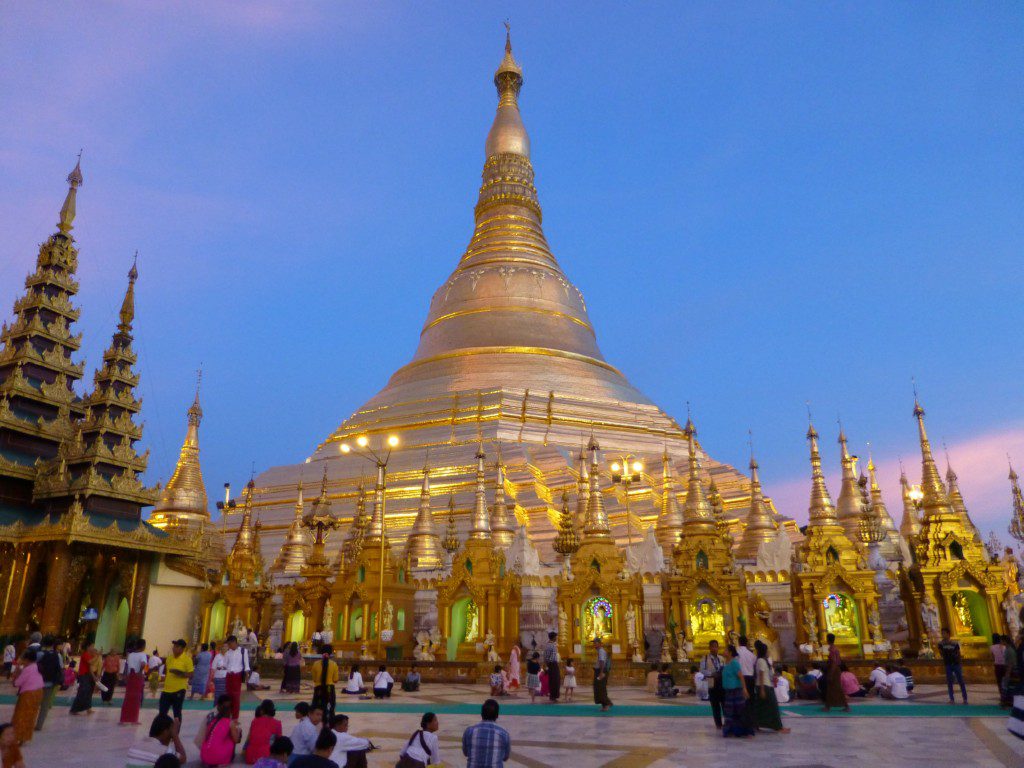 | 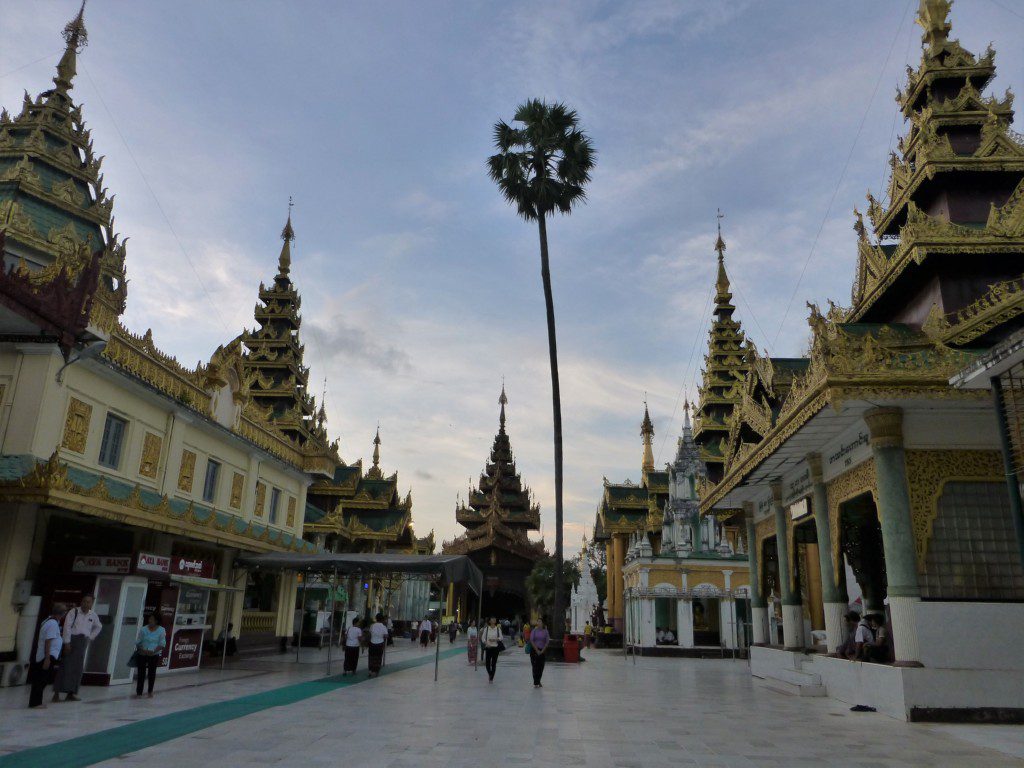 |
 | 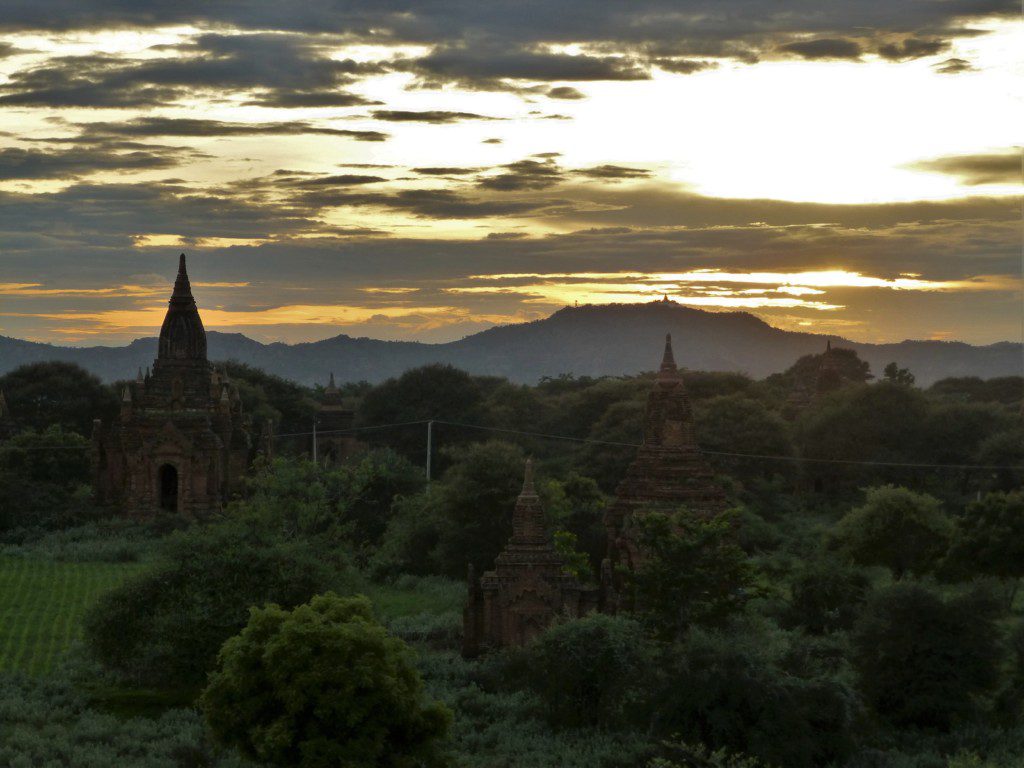 |
 | 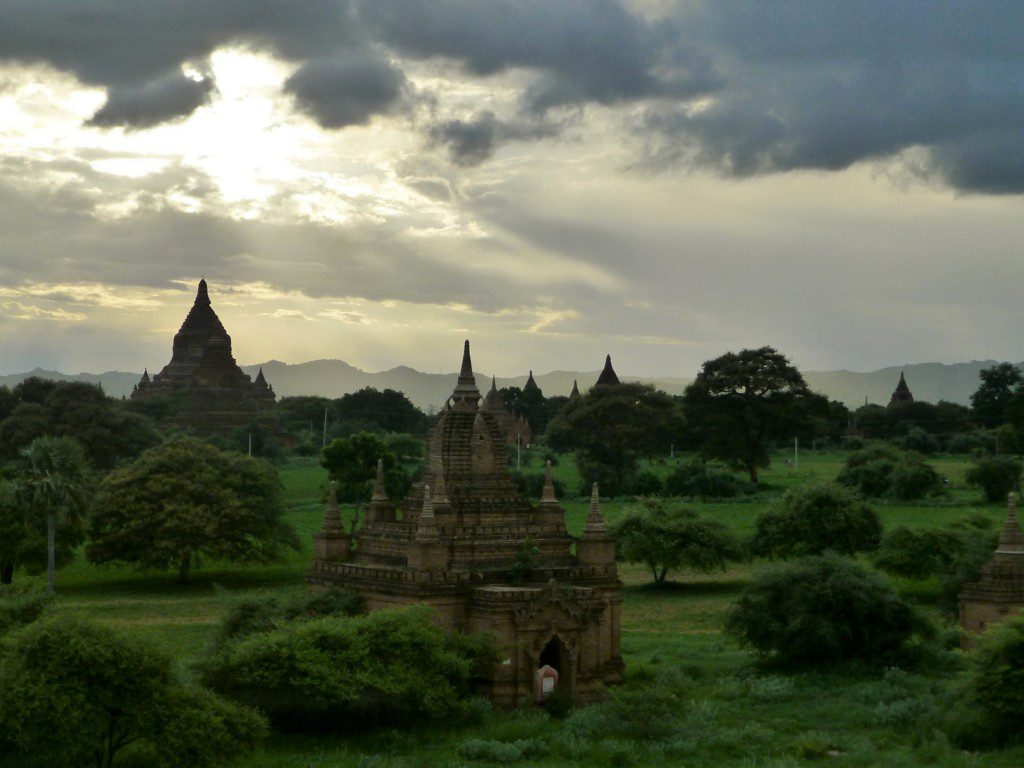 |
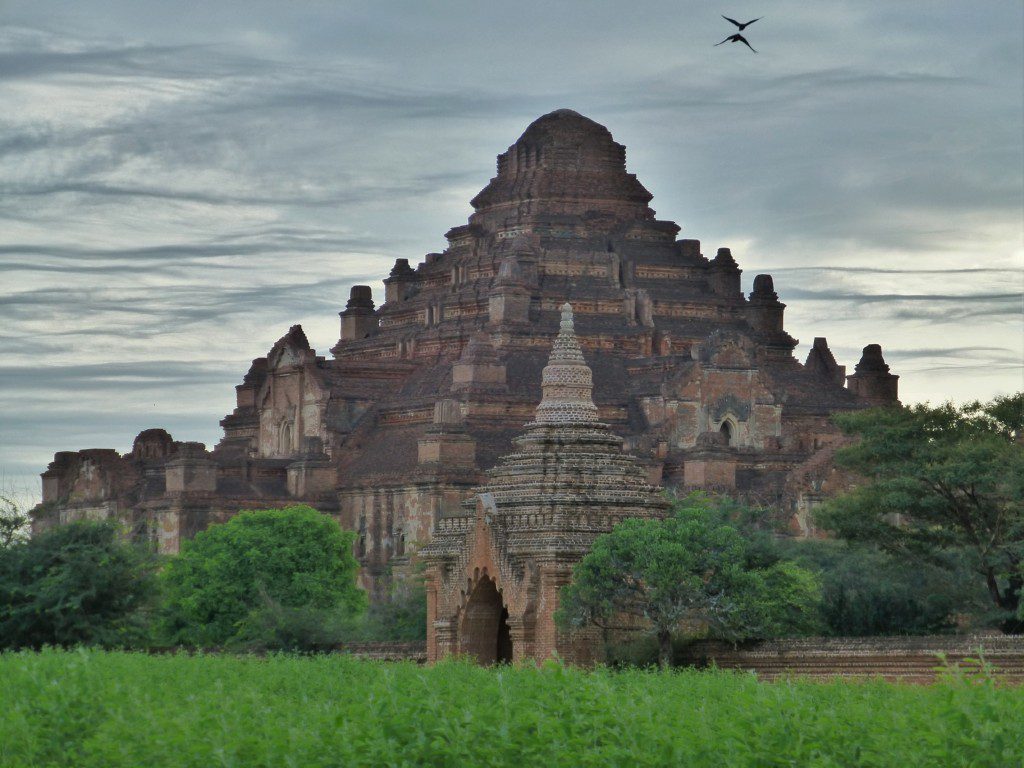 | 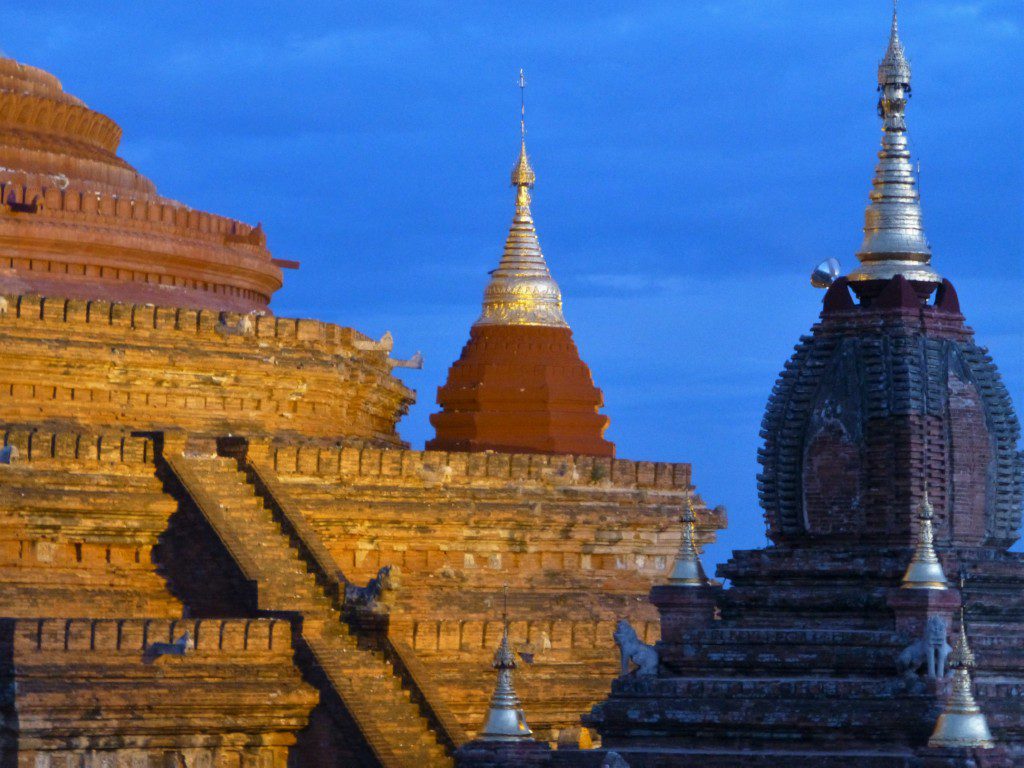 |
 |  |
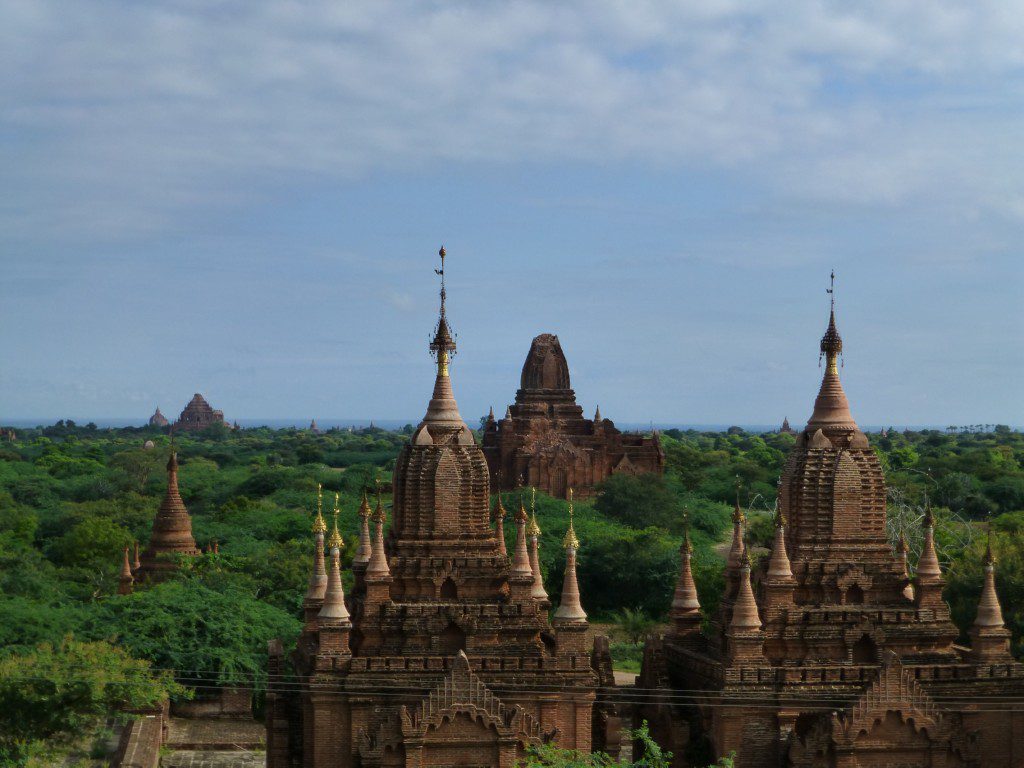 | 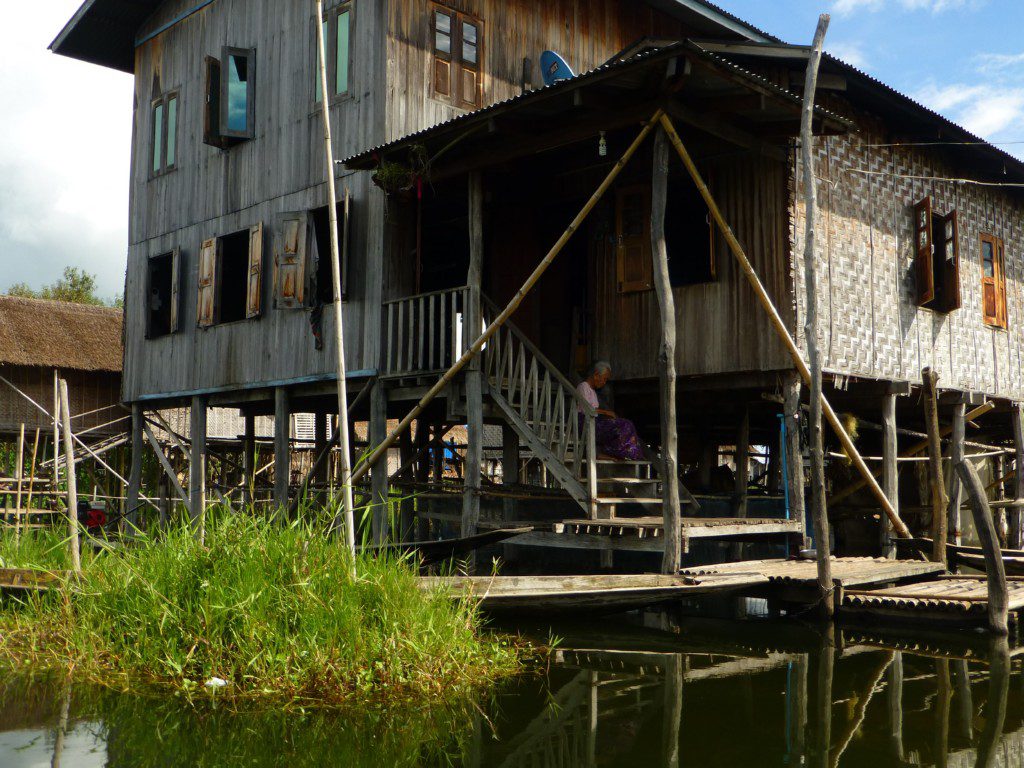 |
 |  |
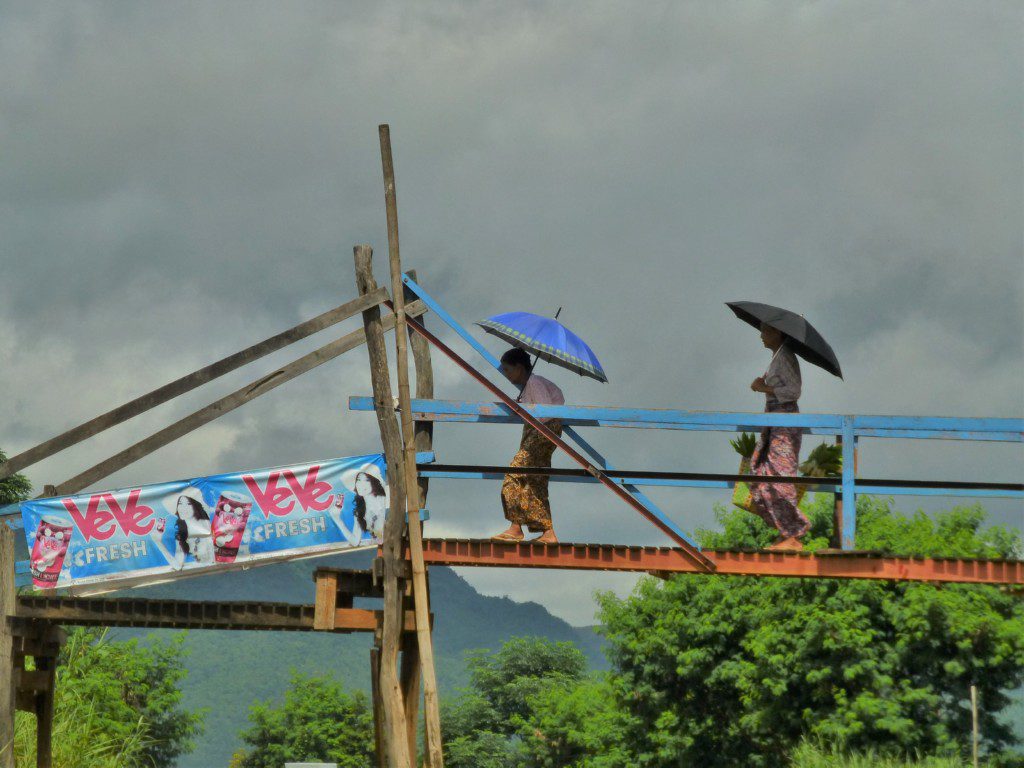 |  |
 | 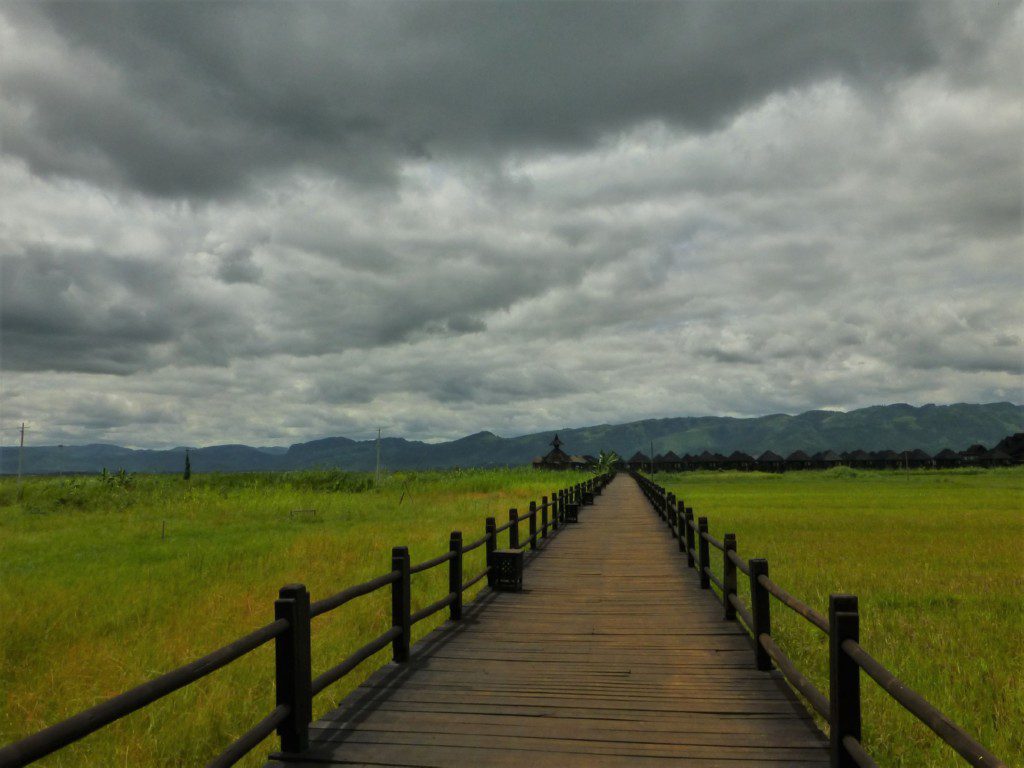 |
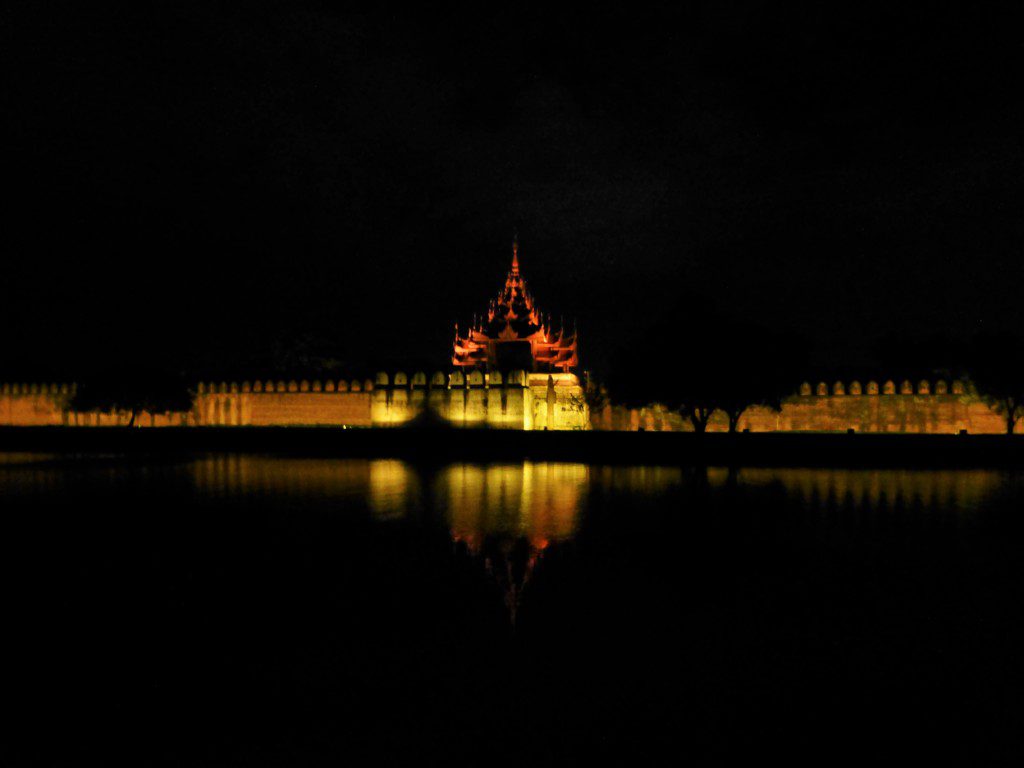 | 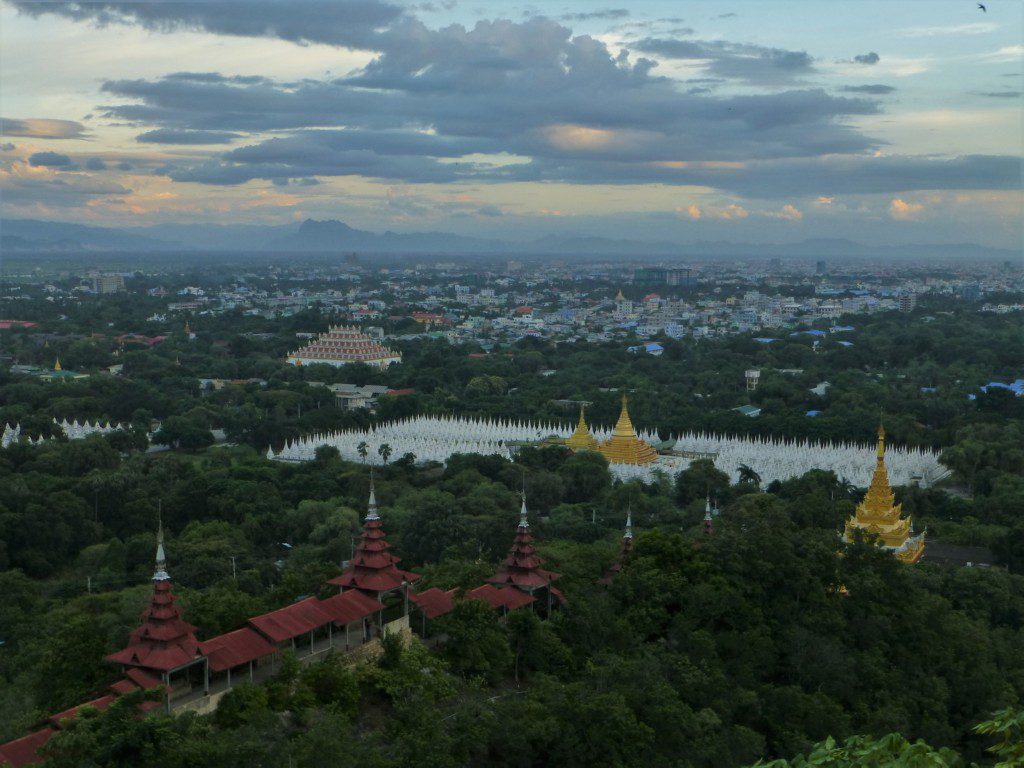 |
 |  |
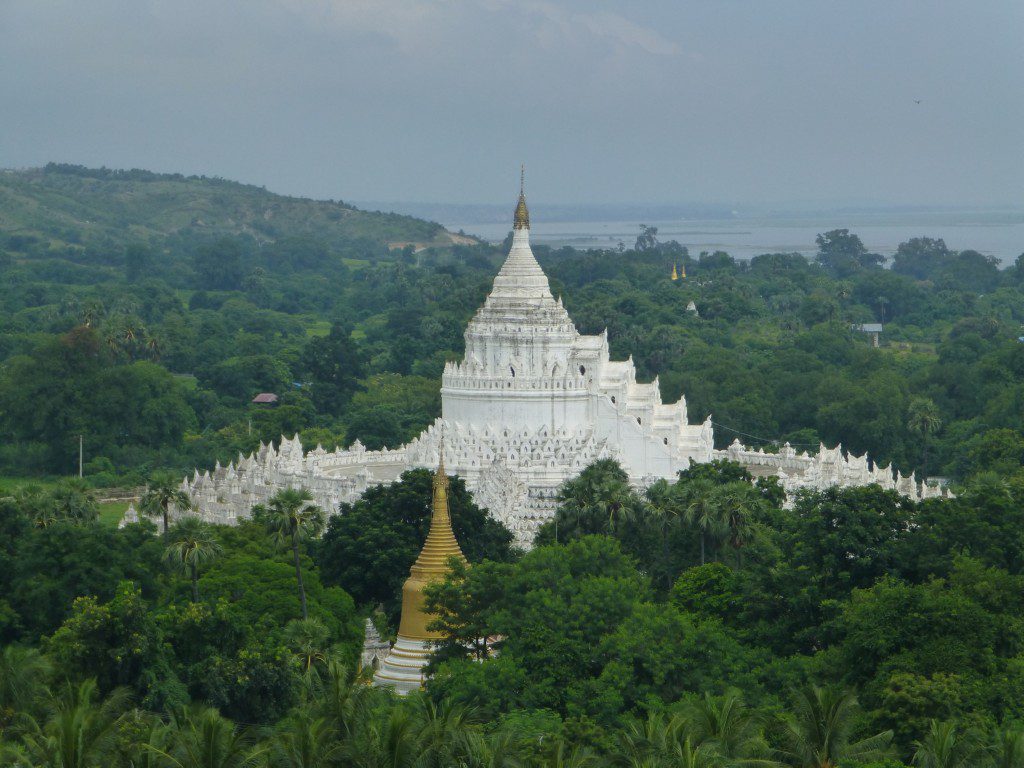 | 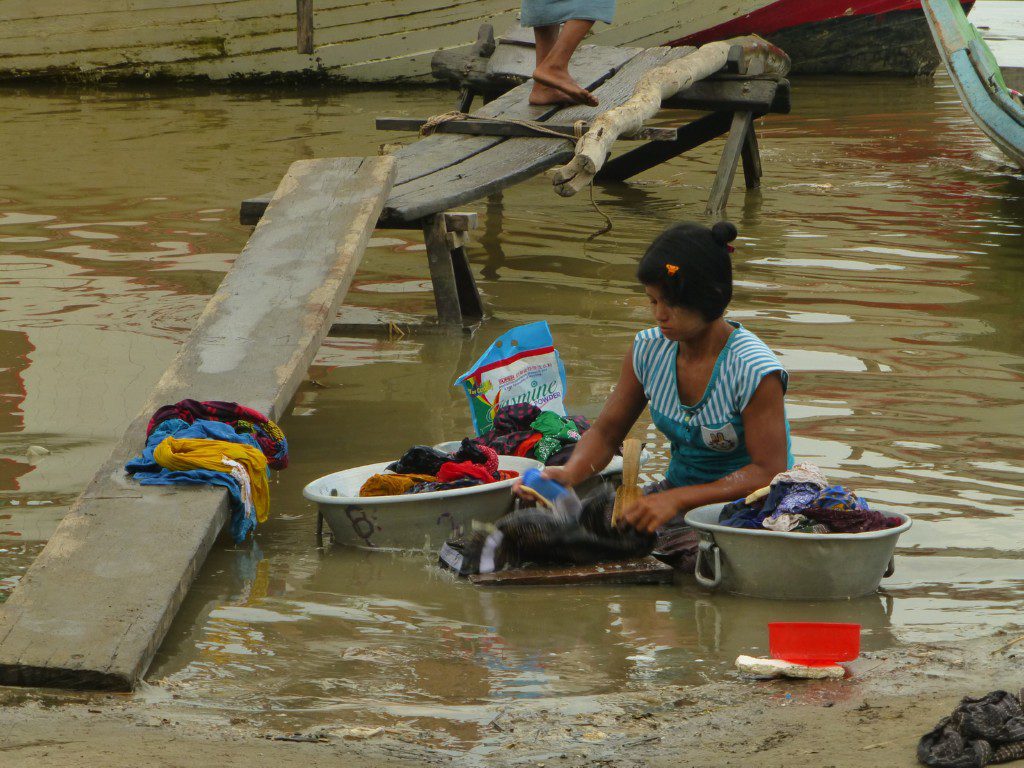 |
 | 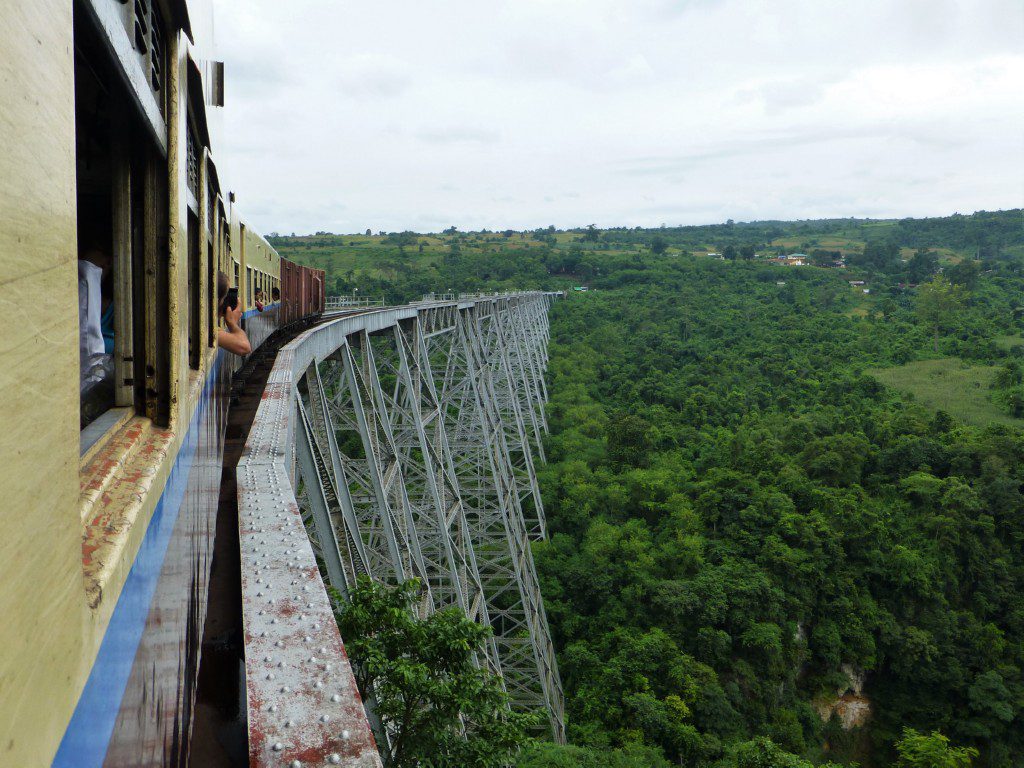 |
 |  |
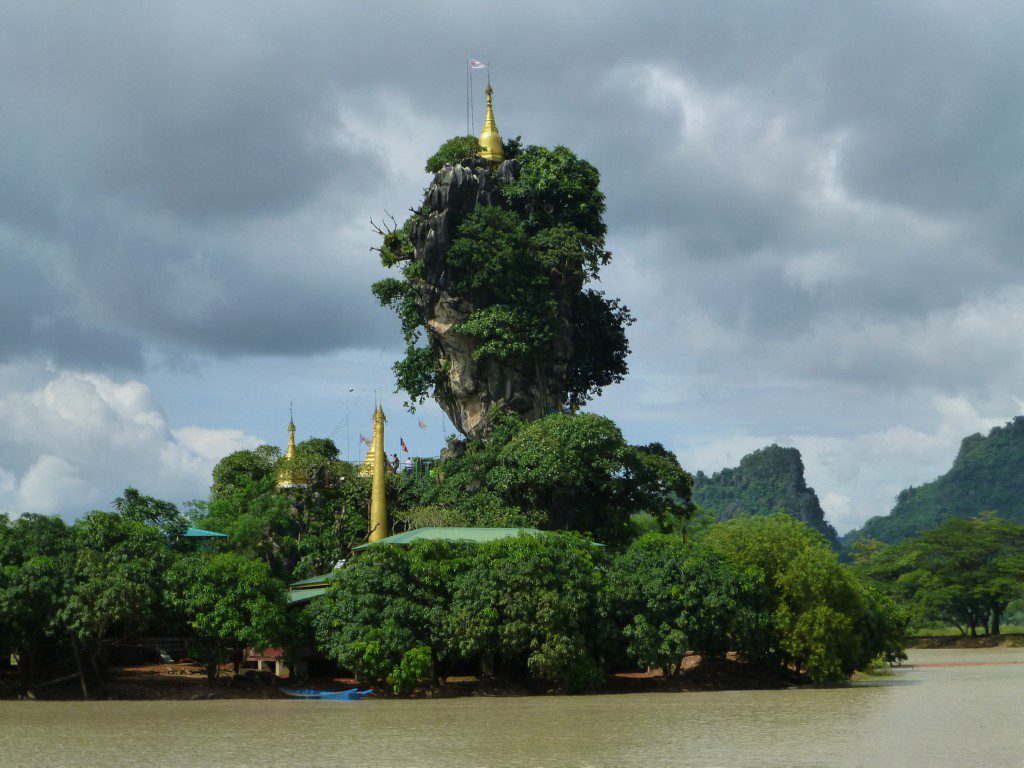 |  |
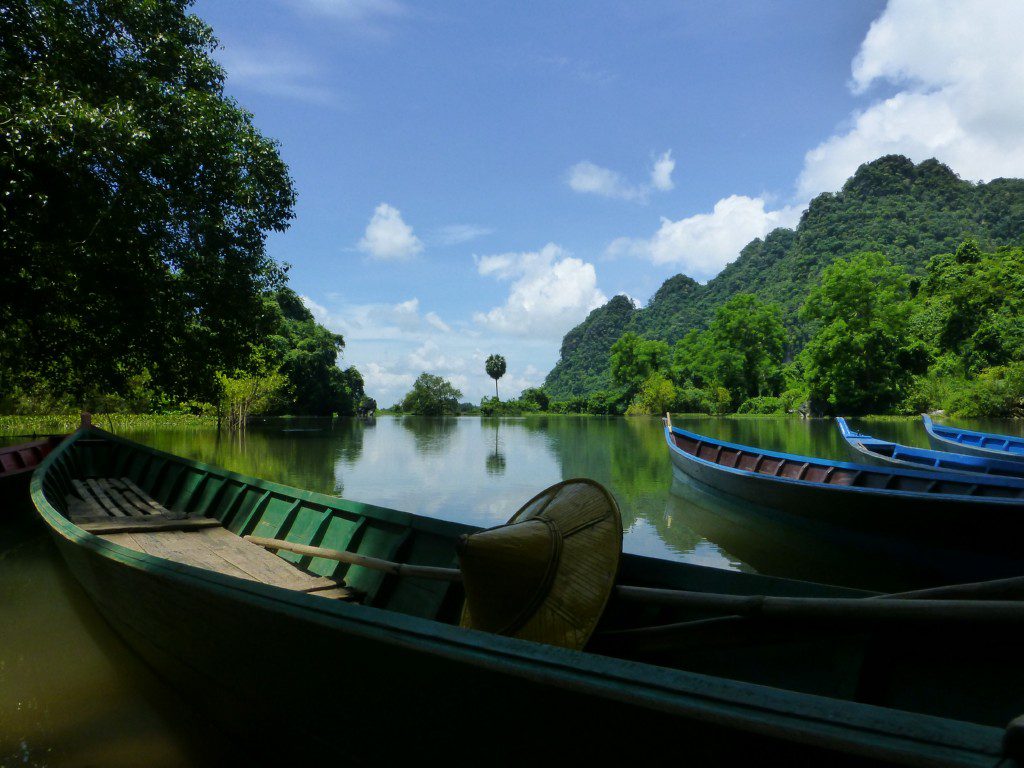 | 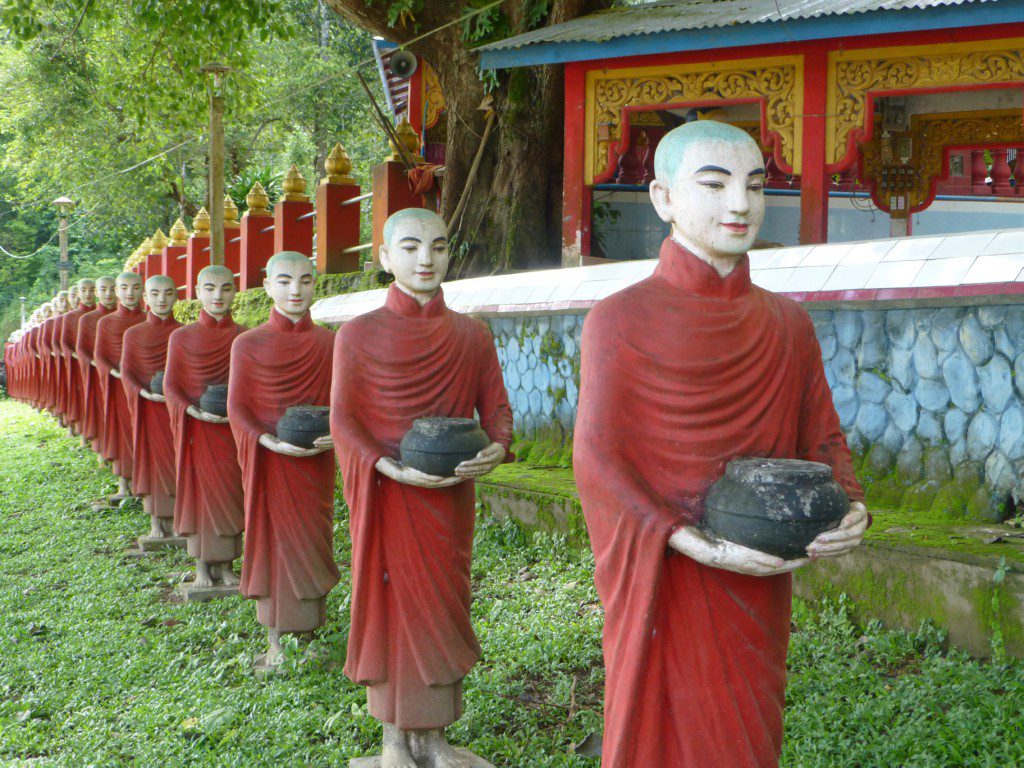 |
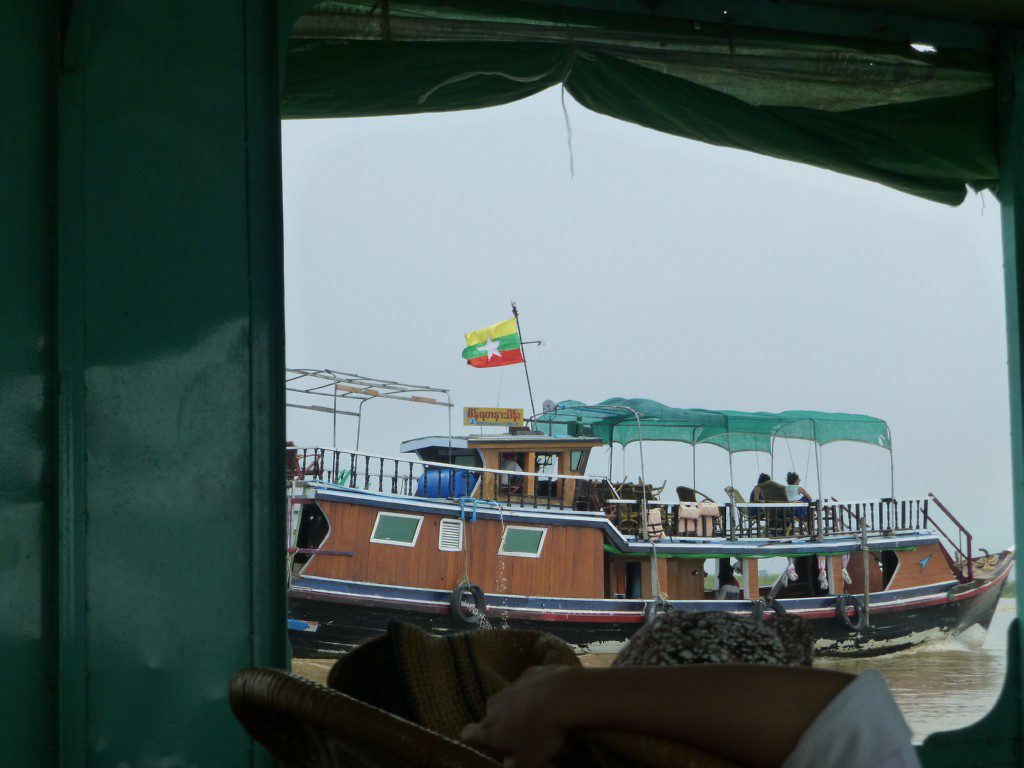 | 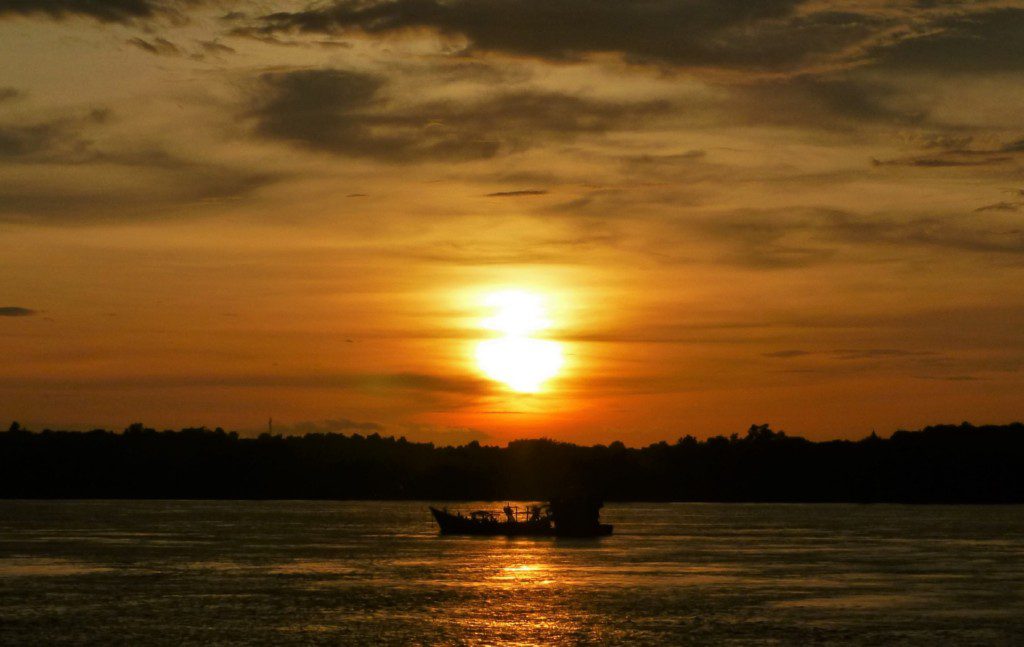 |
Click to See or Add Your Own »

Beautiful photos! I had so much fun in Myanmar, their culture is rich and locals were really nice. Your photos brought back a lot of great memories!
Bookmarked! Thank you for putting this together, this is going to be so handy! Which cities would you recommend that I visit first if I only have a week in Myanmar?Thanks!
I don’t know your interests or the season you will be visiting but I would say start in Bagan as that is the single biggest/best thing to see and do. Once you are there you can decide where to go next. There re some good hikes to do, some decent beaches, lots of temples, etc. I enjoyed every place I visited but I guess it really depends on your interests.
This post brings back so many memories of my recent trip to Myanmar! I never thought about using wet wipes to clean my feet – that’s genius (especially for my husband who stepped on dog poo with his bare foot!)
Oh, that does indeed sound like a job for wet wipes! 🙁